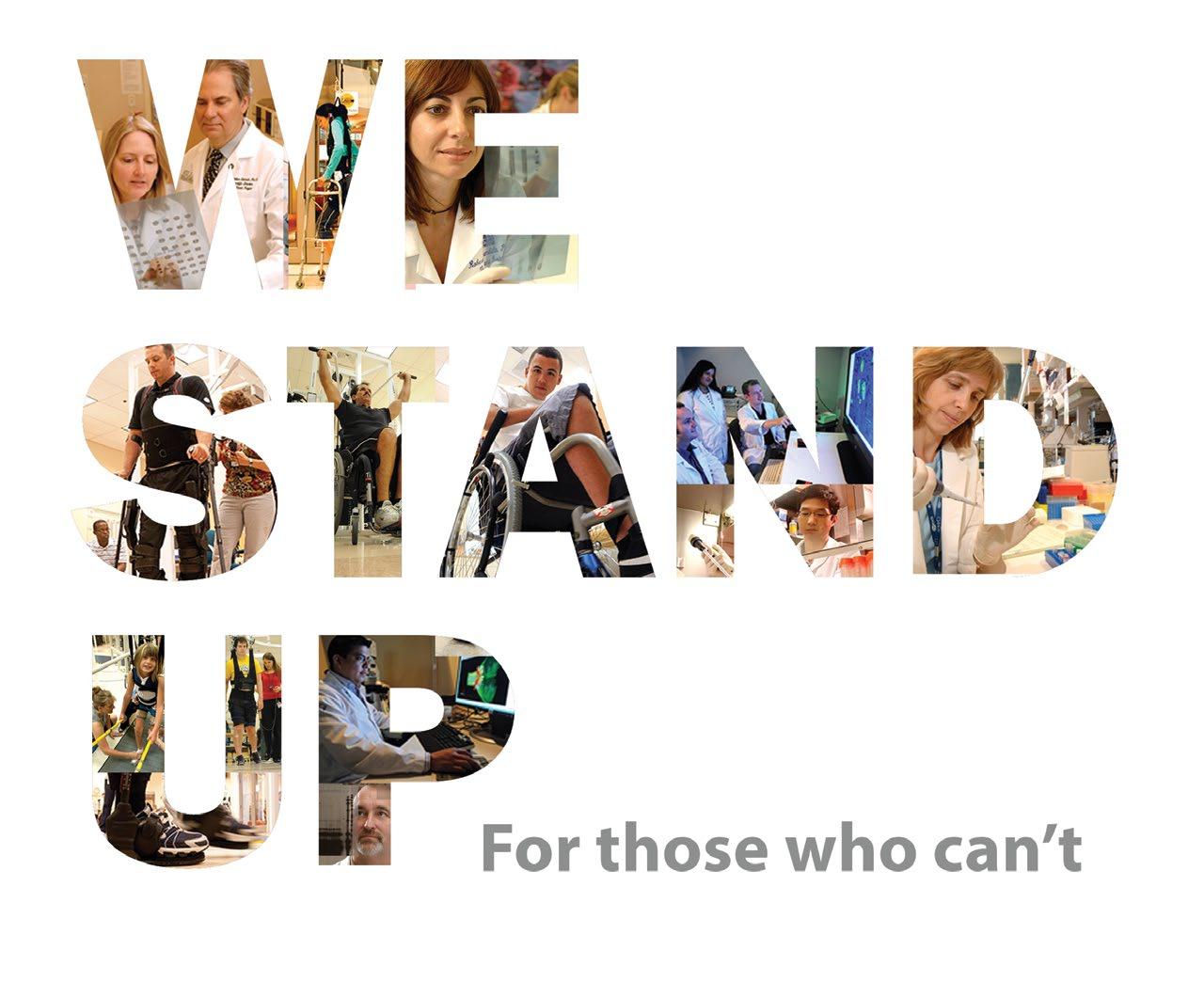The



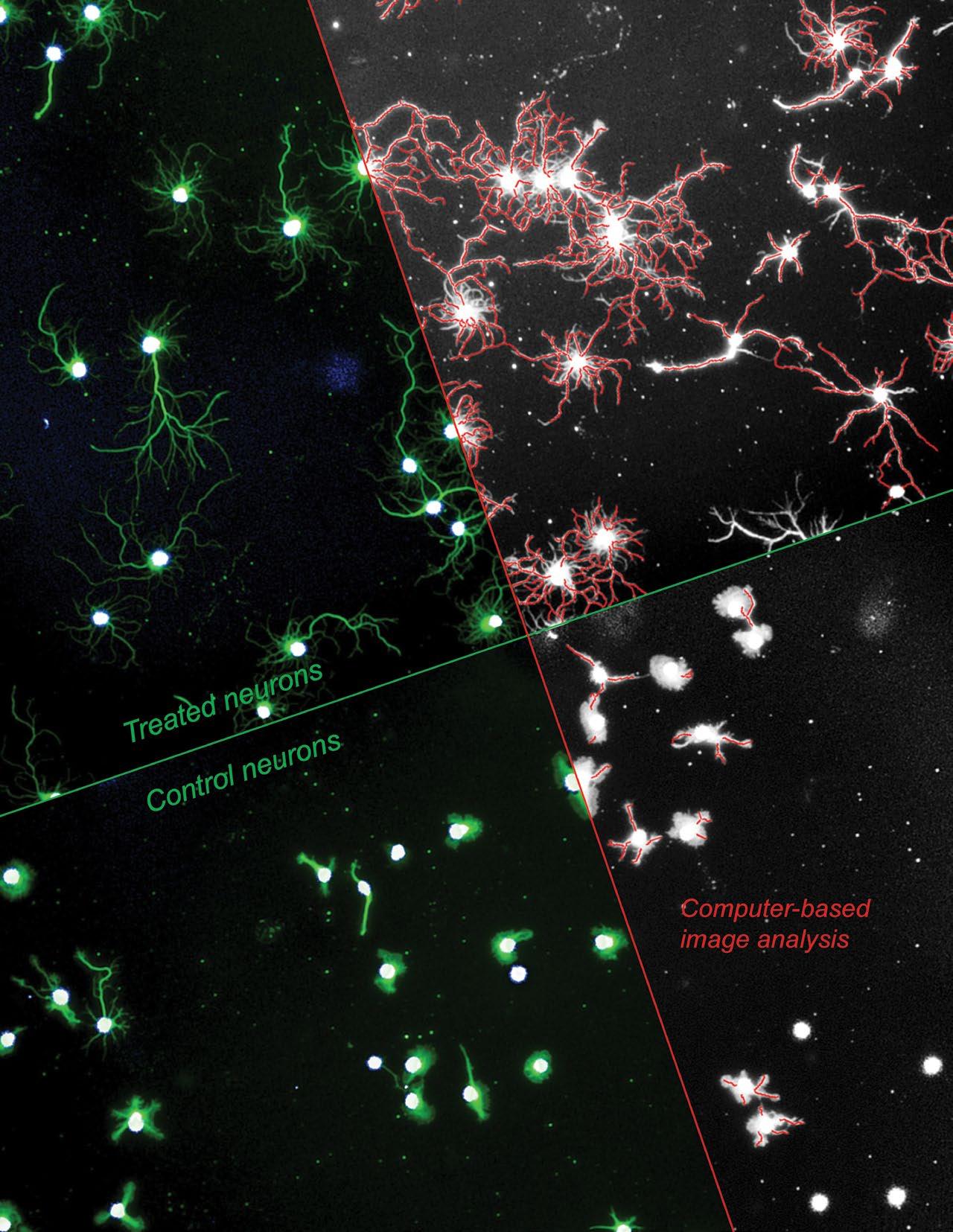
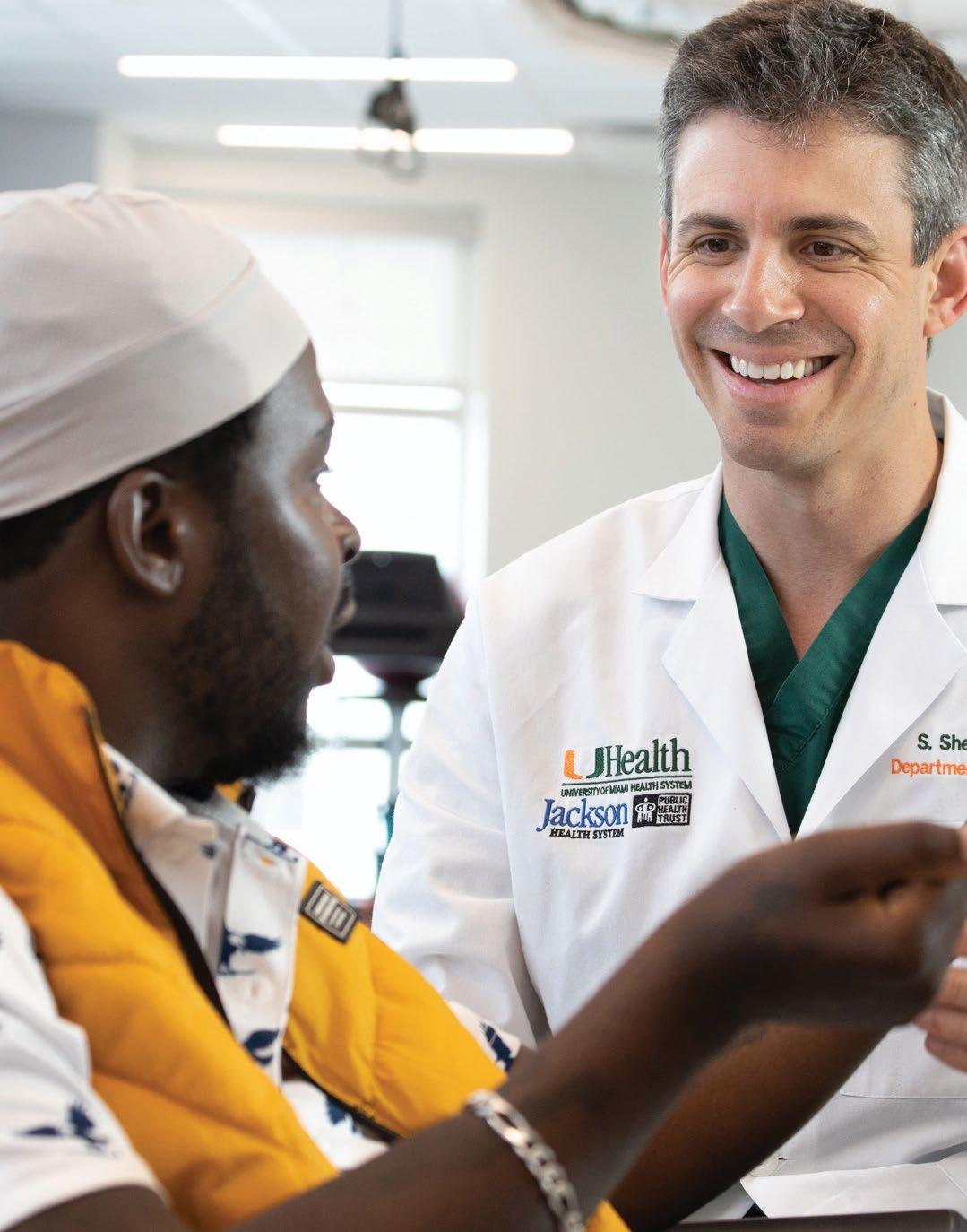
Management
Marc Buoniconti President
Dr. Allan D. Levi Clinical Director, Professor and Chair of the Department of Neurological Surgery
Suzanne M. Sayfie Director Major Gifts Buoniconti Fund

Jeanette Bajo Center Administrator
Robert Camarena Senior Graphic Designer
David McMillan, Ph.D. Director, Education
Dr. Barth A. Green Chairman, Professor of Neurological Surgery
Dr. Mark Nash Associate Research Director
Teresa De Jesus Arcay Assistant to Marc Buoniconti
Diana Berning Senior Manager, Business Operations
Cynthia Jones Manager, Facilities and Operations
Randy L. Medenwald Senior Director, Advocacy and Donor Relations
Erika M. Suazo Executive Assistant to Dr. W. Dalton Dietrich
Dr. W. Dalton Dietrich Scientific Director, Professor of Neurological Surgery
Stephanie Sayfie-Aagaard Executive Director
Betsy Arias Senior Manager, Research Grants
Teri I. Bendell Director, Web Services, Auction, and Database
Jacqueline Manzano Manager, Marketing
Scott P. Roy Director, Public Relations and Communications
Taimy Trujillo
Assistant to Dr. Barth A. Green
Rebecca Avshalom
Ashley Beckwith Javier Burgos
Maria Chagoyen
Danielle Cilien
Frank Diaz
Evelyn Gomez
Carole Robbins
Pablo Sanchez
Scientific Staff & Trainees
Dr. Alexander Marcillo Post-doctoral Fellows Graduate Students
Medical/Residents/Observorships
Undergraduate Students Volunteers
Other Students
Research Staff
Human schwann cell - derived exosomes negatively stained, imaged under a transmission electron microscope.
Ateam of The Miami Project investigators are working on a novel strategy using human Schwann cells to deliver proteins and genetic materials to the injured nervous system as a new therapeutic intervention. The Miami Project has a rich history of working with Schwann cells, one type of neural support cell that helps wrap the exterior of nerve axons in myelin. In doing so Schwann cells play a structural role analogous to insulation, coating the long cylindrical axons of nerves so that impulses are conducted with greater efficiency, speed, and reliability. Researchers at The Miami Project have known for some time that the structure is not Schwann cells’ only function and are now realizing a novel potential through a bench-to-bedside investigation of Schwann cell-derived exosomes.

Exosomes, a kind of extracellular vesicle, are a way by which cells can transport a rich cargo efficiently between one another. The vesicles, that eventually become spheres packed with molecules, begin their journey in an unassuming manner. The cargo that will eventually fill them is manufactured inside the cell, carefully selected for export, and then moved to the surface of the cell. There, a portion of the cell membrane begins to bud away from the cell, is filled with the cargo in the region, and eventually buds off completely. This process is not specific to one cell type, but the contents of the exosomes do contain a unique payload specific to the cells of origin. Furthermore, their exteriors can be labeled with specific markers that might help them find or act on targets of interest to their parent cell.
In the case of Schwann cells, the natural exosome production by which these cells can exchange information with their surroundings occurs at a modest rate. When optimized in an artificial setting, such as a laboratory culture dish, Schwann cells can be made to extrude great amounts of exosomes. Containing the cell-specific cargo, exosomes might be a viable alternative treatment to delivering the whole cells through invasive transplantation procedures. Whole cells are large, can migrate, and must likely stay alive to enact their effects. Exosomes are smaller, but still contain certain naturally occurring cargo of likely biological relevance.
Furthermore, the assortment of internal contents—proteins, RNA, and other molecules—means exosomes have a variety of immediate and longer lasting potential effectors they might act on, increasing the chance for a positive effect including neuroprotection or regeneration. Importantly, there is scientific evidence in other fields that exosomes from certain cells have therapeutic relevance to conditions involving the tissues where the cells play a role. For example, exosomes released by cancer cells can promote tumor growth and metastasis, while exosomes from immune cells can help to fight infections and modulate immune responses. In this manner, Schwann cells that normally play a structural role inside the body might instead be coerced outside the body into becoming pumps, like tiny autonomous pharmaceutical companies manufacturing a drug to be introduced to the body for treatment of a neurological condition.
Such is the goal of W. Dalton Dietrich, Ph.D., Scientific Director of The Miami Project, and a multidisciplinary scientific team, including James D. Guest, M.D., Ph.D., Allan Levi, M.D., Ph.D. Helen M. Bramlett, Ph.D., and Damien D. Pearse, Ph.D., of The Miami Project, and Aisha Khan, Ph.D., of the Interdisciplinary Stem Cell Institute. This group has tuned their Schwann cell exosomes approach using preclinical models of traumatic brain injury and are now gearing up to understand and advance these exosomes in models of spinal cord injury. In parallel to these bench studies, a recent compassionate care case study was conducted in an individual with late-stage amyotrophic lateral sclerosis (ALS). The robust experience of the team, with manufacturing biologic products that can achieve FDA approval for use in humans, allowed them to dynamically respond to the situation and set the precedent for the use of Schwann cell exosomes for the treatment of a neurological condition. The potential for this new therapeutic application is very high and future research will determine how best to utilize this naturally occurring cellular process to treat paralysis and other neurological disorders.
The robust experience of the team, with manufacturing biologic products that can achieve FDA approval for use in humans, allowed them to dynamically respond to the situation and set the precedent for the use of Schwann cell exosomes for the treatment of a neurological condition.
The Miami Project to Cure Paralysis has long led efforts aimed at regenerating and repairing the central nervous system (CNS). Institutions such as ours, possessing the full stack of expertise from early discovery to clinical application, are well-suited to compete for the highly regarded Blueprint Neurotherapeutics Network (BPN) Program from the National Institutes of Health (NIH). Accordingly, The Miami Project’s pursuit of this opportunity came to fruition for a program aimed at developing a novel therapeutic to treat spinal cord injury (SCI).
Recently, the program crossed a major milestone, moving from the exploratory phase into the development phase and accelerating its progression through preclinical studies. The team is led by Hassan A. Ali, Ph.D., M.S.M., Associate Professor of Neurosurgery and Medicine, and includes renowned Miami Project neuroscientists John Bixby, Ph.D., Professor emeritus of Molecular & Cellular Pharmacology and Neurological Surgery, Vance Lemmon, Ph.D., Walter G. Ross Distinguished Chair in Developmental Neuroscience and Professor of Neurological Surgery, and Jae Lee, Ph.D., Professor of Neurological Surgery, as well as Alberto Martinez-Arizala, M.D., Clinical Associate Professor of Neurology, Neurological Surgery, and Orthopedics & Rehabilitation Medicine.
A setup to concurrently image the body and outgrowths of multiple neurons, treated or not (control) with a drug being developed through the BPN Program. Computer-based image analysis allows for visualizaiton, and thus quantification, of new outgrowths following treatment.
As a milestone-driven program fashioned to resemble the pharma model, the BPN supports
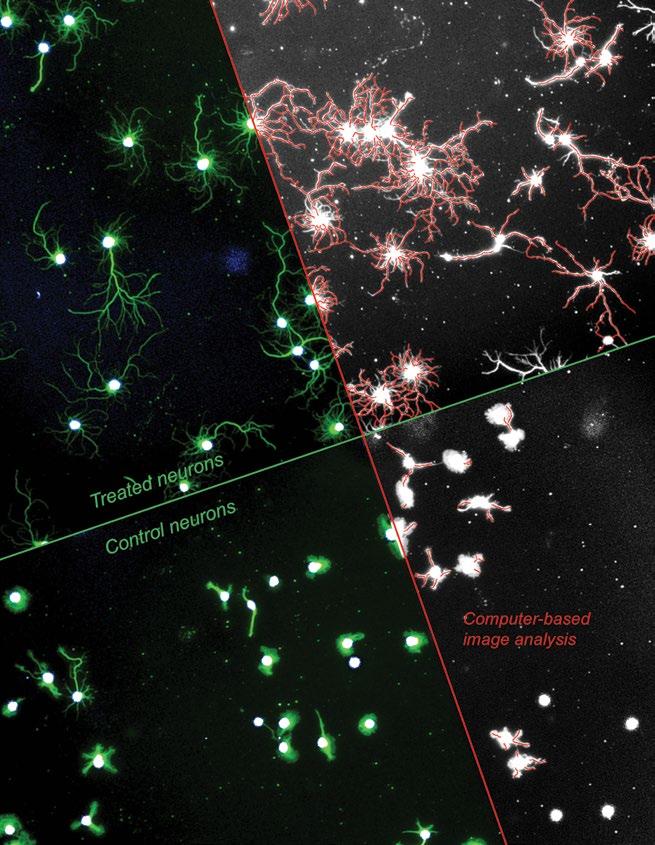
CNS drug development starting with medicinal chemistry and optimization of a lead compound, through pre-clinical testing and FDA clearance, all the way to execution of a Phase 1 clinical trial. This innovative funding model brings under one umbrella the major components of drug development and allows an awardee lab or small business to drive its program toward an Investigational New Drug (IND) application while fully retaining intellectual property rights. The project, titled “Developing a kinase inhibitor drug to treat spinal cord injury,” is currently one of just seven BPN programs nationwide, including both academic and industry awardees. As it is one of the few BPN programs to succeed in making the exploratoryto-development transition, and the only one to focus on paralysis caused by SCI, the program’s success in crossing this milestone marks a major development for The Miami Project’s mission of curing paralysis.
The team’s innovation lies in its understanding that there are many reasons why CNS axons fail to regenerate, with multiple points of failure interacting in a complex network. This inherent complexity means that even if a single-point intervention succeeds in overcoming a targeted point of failure, the system can alter other network elements to compensate and undermine the attempt. Classically,
single-point or “hyper-selective” drugs were preferred due to ideas about the certainty of their end targets and effects. The tradeoff, however, was the need to use multiple drugs to affect multiple targets, increasing the risk of drug-drug interactions and untoward side effects resulting from the polypharmacopeia required to manage complex conditions like paralysis. The kinase inhibitor being exploited by Dr. Ali and team instead shifts the paradigm, designing one drug to have multiple on-label targets at several known points of CNS regeneration failure, including those both intrinsic and extrinsic to the regenerating nerve cells.
The recent transition marks the start of the development phase, so steps remain before an IND application is accepted to allow the move into a Phase 1 clinical safety trial. Stay tuned for updates on this project as our team continues to work diligently on exemplar projects such as this phased cooperative agreement with the NIH to develop a drug targeting CNS axon regeneration in people with paralysis. Stay tuned to our website www.themiamproject. org and as always, our Office of Education and Outreach can help inform you about this work and connect you to the researchers. Get in touch via email mpinfo@med.miami. edu or phone 305-243-7108.
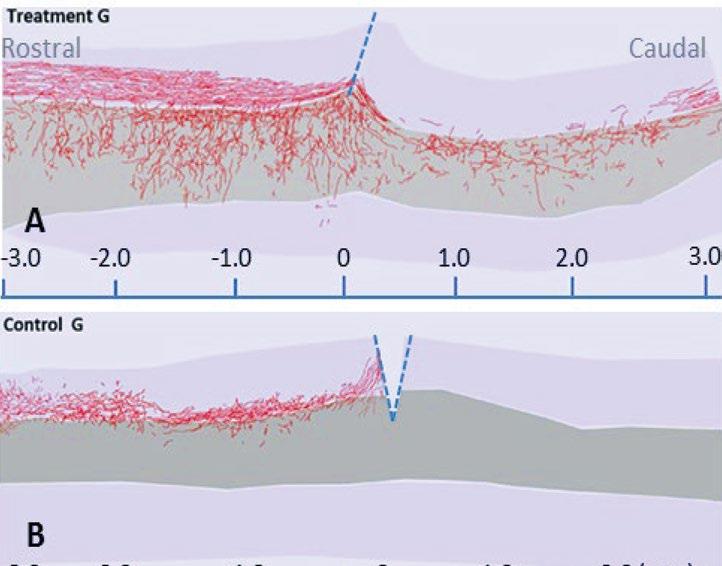
Housed partially within The Miami Project’s Lois Pope Life Center, the Institute for Neural Engineering at Miami is leading the charge for new diagnostics, technologies and therapies for patients suffering from a wide array of disorders affecting the nervous system. The Institute at University of Miami is lead by Suhrud M. Rajguru, Ph.D., Professor, and W. Dalton Dietrich, Ph.D., Professor, and unites parallel efforts across all three campuses under a single umbrella.
The Institute was borne out of close collaborations between the Miller School of Medicine, Department of Biomedical Engineering at the College of Engineering, and The Miami Project, and is now a pan University effort. The Institute is the coming together of efforts into three main pillars. The dissemination mission is summarized by the Annual Neural Engineering Research Symposium, started in 2017 and calling together researchers at various levels to highlight ongoing and planned breakthrough translational neuroscience and neurotechnology developments. This event provides a platform for trainees and researchers to communicate their work broadly, with presentations, posters and discussions from attendees from academic and industry partners. The educational mission is realized through truly unique BS/MS and MS in Neural Engineering academic programs directed by Dr. Rajguru. The inaugural cohorts of this program began in the fall semester of
2022, with the curriculum focused on challenging issues such robotic movement systems, bioengineered materials, brain-computer interface, and treatments for degenerative and yet-cured neural conditions. The scientific mission is summarized through the past and ongoing application of engineering knowledge and solutions to problems in paralysis. The Miami Project has a history of collaborating with professors and students from University of Miami College of Engineering, including faculty with dual appointments in Biomedical Engineering such as W. Dalton Dietrich, Ph.D., Abhishek Prasad, Ph.D, Patrick D. Ganzer, Ph.D., and Courtney M. Dumont, Ph.D. The Institute is expanding to include affiliates from departments such as biomedical engineering, neurological surgery, physics, psychology, otolaryngology, ophthalmology, neuroscience, neurology, music, psychiatry and physical medicine and rehabilitation.
The coming together of these university-wide experts will allow for the focusing of scientific, clinical, and engineering efforts to generate tangible solutions for

people with neurological conditions. Throughout the pillars, the Institute also provides support for translation and commercialization of research to benefit patients through member’s connection to, and leadership positions within, support structures such as the university’s Clinical and Translational Science Institute, the National Science Foundation’s Innovation Corps (I-Corps™) program, and UInnovation and Office of Technology Transfer resources. Through leveraging the depth and expertise across the departments and schools, and breadth of services across centers and offices, the Institute aims to create transdisciplinary teams of engineers, scientists, and physicians that otherwise would not have been formed, and build a workforce oriented toward neural engineering. The Institute is now well-posed to leverage the expertise and these teams for large research and educational program grants.

Know someone interested in applying to one of the programs as part of this Institute and its efforts in Neural Engineering? Check out the College of Engineering website https://www.coe.miami.edu/academics/programs/ index.html. For information on the symposium and research projects, stay tuned to our website www. themiamproject.org and as always, our Office of Education and Outreach can also help inform you about this work and connect you to the researchers. Get in touch via email mpinfo@med.miami.edu or phone 305-243-7108.
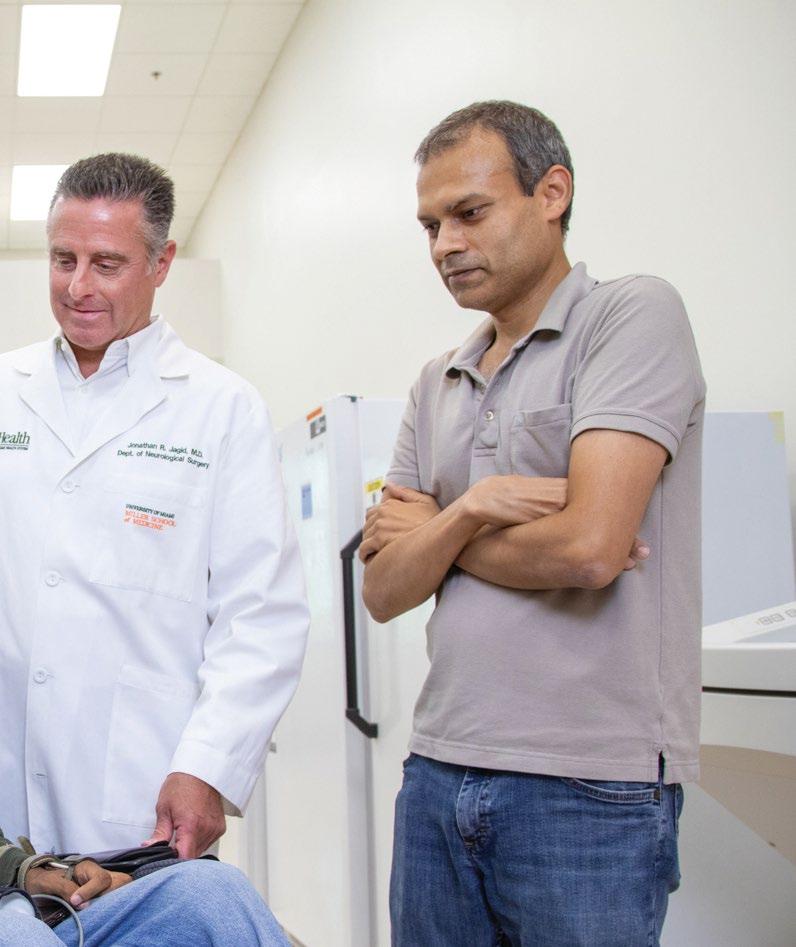
The coming together of these universitywide experts will allow for the focusing of scientific, clinical, and engineering efforts to generate tangible solutions for people with neurological conditions.Jonathan Jagid and Abhishek Prasad Dr. Patrick Ganzer
This award allows for continuation of a collaborative project between scientists at The Miami Project, Department of Neurological Surgery, and Department of Human Genetics and Genomics. The project will bring to fruition Dr. Liebl’s previous work that identified specific cells, receptors, and molecules—potential therapeutic targets— involved in synaptic loss after traumatic brain injury (TBI).
Daniel J. Liebl, Ph.D., professor at The Miami Project to Cure Paralysis and co-director of the Miller School of Medicine’s Medical Science Training Program (M.D./Ph.D.), was recently awarded a $2.6 million R01 grant from the National Institute of Health (NIH) entitled “Stabilizing the tripartite synaptic complex following TBI”. This award allows for continuation of a collaborative project between scientists at The Miami Project, Department of Neurological Surgery, and Department of Human Genetics and Genomics. The project will bring to fruition Dr. Liebl’s previous work that identified specific cells, receptors, and molecules— potential therapeutic targets—involved in synaptic loss after traumatic brain injury (TBI).
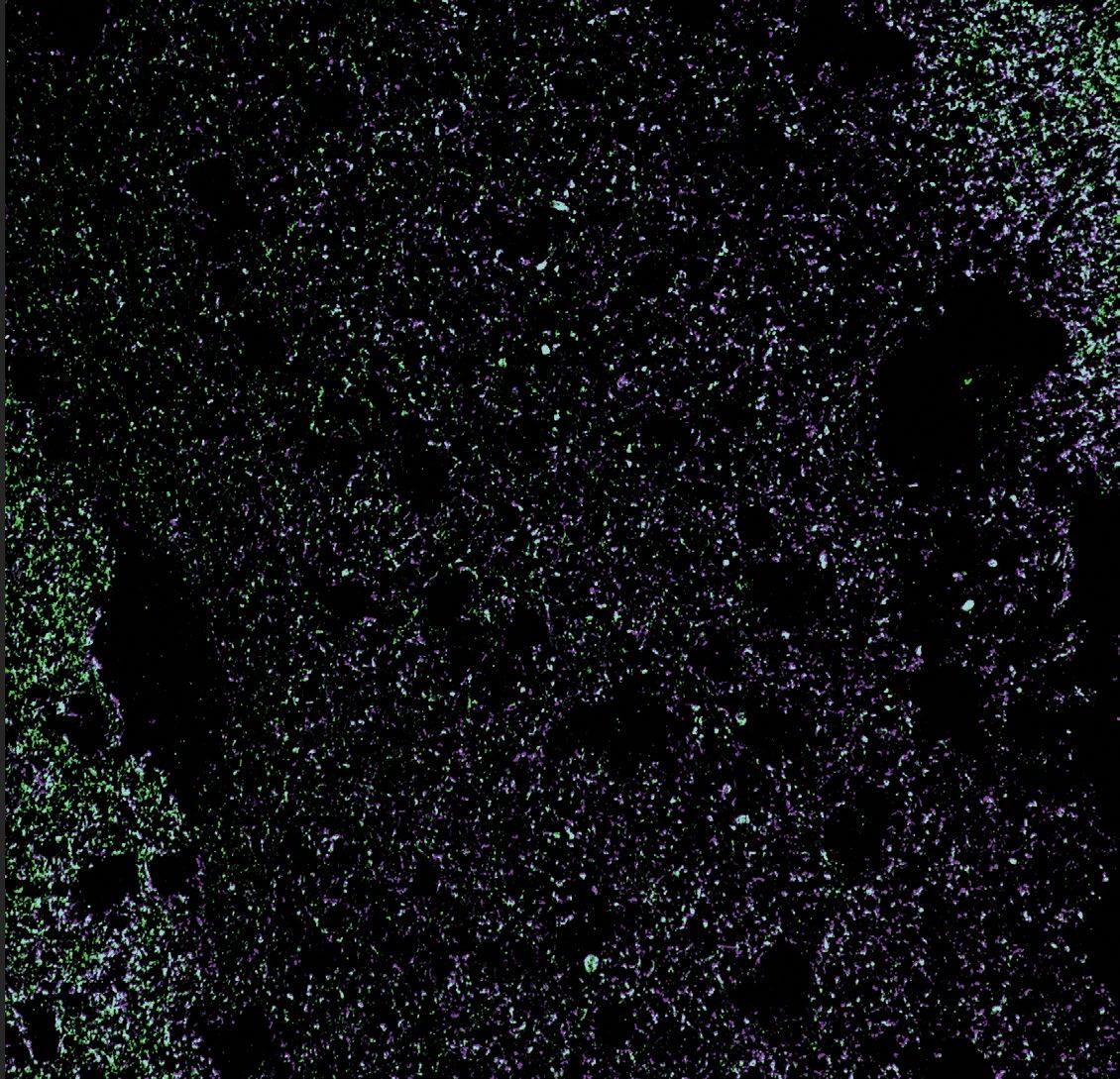
Dr. Liebl and his team first established an understanding of how a focal TBI results in the reduction of synapses, those distinct cellular units where neurons transmit signals between each other. The genesis for the project came from the observation that TBI induces loss of synapses in brain areas distal to the injury site where cell death, and other traditional measures of injury, previously seemed mildly affected. Each neuron contains many synapses, hundreds to thousands, that are dynamically pruned during development in a consolidation process stabilizing in adulthood. Unless inappropriately reawakened, so Dr. Liebl’s work tells us, by an insult such as TBI. The work began in pre-clinical models by mapping the molecular drivers of synaptic damage. Dr. Liebl and his team leveraged their expertise on neuronal signal transmission that occurs across the tripartite synaptic complex, a functional morphological feature involving two neurons—one conducting the signal and the other receiving—and two types of support cells known as glia. Dr. Liebl’s work established that dysregulation of the molecule D-serine in the synaptic complex contributes to TBI induced loss of synapses in brain regions distant from the mechanical trauma at the injury site. Specifically, the work of Dr. Liebl and his team established that the substantial synaptic damage in surviving cells after TBI occurs due to a reduction in the normal phasic release of D-serine from the primary neurons, combined with an uncoordinated increase in the production of D-serine from glial support cells. Interestingly, D-serine is one of a few “D” amino acids with physiological functions in humans, where “L” amino acids are the building block of our bodies. In a key insight, the team identified that over time that prolonged release of D-serine binds to specific receptors on the outskirts of the synapse, activating a process biologically
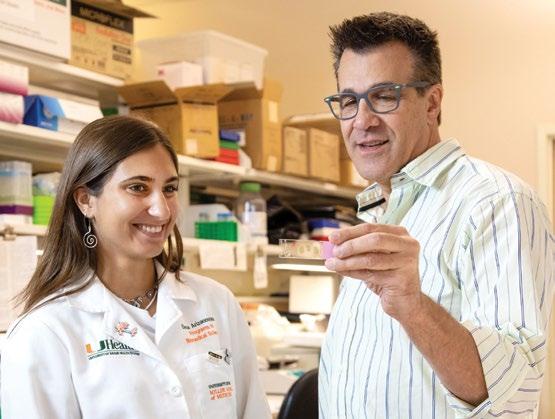
intended to coordinate synaptic pruning in early life but that is improperly turned on by D-serine in TBI. Importantly, they showed too that experimental inhibition of D-serine production or release by glia holds off the synaptic damage and loss that occurs after TBI.

With the players and the process identified, the team will now develop therapeutics to target synaptic loss after neurotrauma. In collaboration with neurosurgeons, it is already confirmed that the same molecular machines are involved in humans as in the pre-clinical models used to establish the understanding. Now the work will be expanded in continuing collaboration with neurosurgery to confirm calibration of the models and move toward a pharmaceutical agent to target this now well-defined mechanism.
Certain impacts of paralysis are self-evident, like a wheelchair user’s impaired voluntary leg movement. Accordingly, many targeted treatments for paralysis aim to increase the function of something that once was. Neither is the case with neuropathic pain, an invisible condition characterized by the gain of something newly undesirable. A team of Miami Project researchers lead by Eva Widerström-Noga, D.D.S., Ph.D., Research Professor, has added another to a recent streak of awards to understand and manage neuropathic pain after spinal cord injury, leveraging recent insights from the cognition of perception.
A new award from the Department of Defense, titled “Mechanisms and utility of multisensory bodyrepresentation in SCI and SCI-related neuropathic pain,” carries on an established program of neuropathic pain research at The Miami Project. The idea was inspired by an observation from an ongoing project by the same team employing a polytherapeutic approach, adaptive trial design, and mixed-methods outcomes. By inviting participants to provide rich contextual feedback about the individual approaches being combined, the study team observed repeated requests for neuropathic pain management alternatives and/or complements to pharmacology. In that study, the team was employing bodily illusions as a therapeutic stimulus, analogous to mirror therapy after limb loss, and seeing positive effects on neuropathic pain. It was the concurrent request for nonpharmaceutical options and novel application of bodily illusion that inspired the new project.
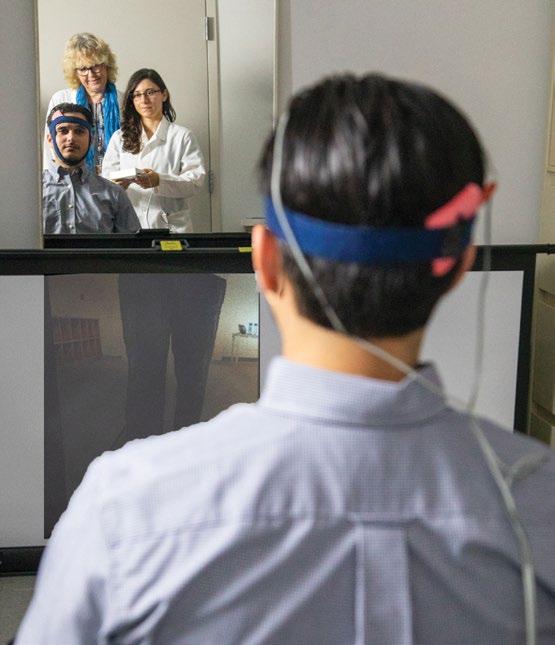
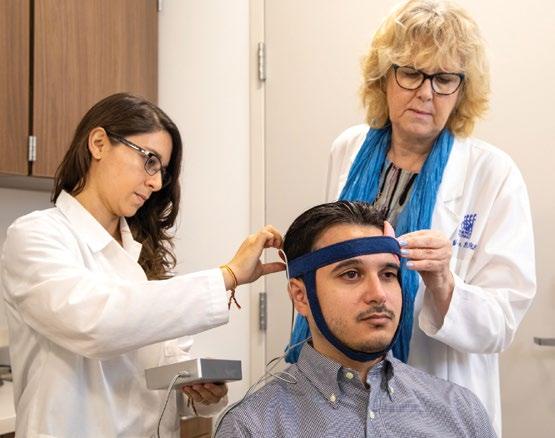
Our brains dedicate different regions to different functions, and the areas of the brain responsible for conscious movement and sensation are both descript and
well described. “Primary” sensory areas contain neurons topographically arranged in a manner that physically encodes the body regions they directly receive ascending input from. Other areas are less anatomically literal, and integrate sensory information from various sources such as vision, touch, and hearing. This integral process is not direct sensation but instead underpins higher order cognition and behavior. Damage to ascending and descending pathways after SCI reduces information flux, negatively affecting the natural flow these brain areas are accustomed to integrating. The result is vulnerability to development of
neuropathic pain. Non-invasive methods, known as bodily illusions (e.g., rubber hand illusion and walking illusion) tap into the integral brain processes, possibly reducing the neuropathic pain associated with a decoupling of these integration centers from the body they’re designed to be communicating with. The combination of these illusions boosted by non-invasive electrical brain stimulation of the specific integration areas might yield more bang for the illusive buck. The physiological rational makes good sense, and existing evidence supports the potential for this approach to better neuropathic pain in people with SCI. Thus the team look forward to employing this combinatorial approach, while also remaining diligent to building the scientific understanding needed for further development and improvement of patient access to these non-pharmacological methods for managing neuropathic pain. This requires a better understanding of underlying brain mechanisms of pain, how regulation of brain mechanisms correspond to decreases in pain, and individual
Opposite page top: Researchers prepare a participant for transcranial direct current stimulation
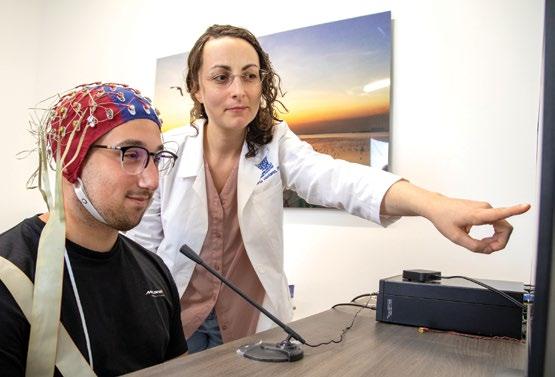
Opposite page bottom: A participant prepared for brain stimulation paired with a walking illusion
Left: A multi-channel cap to measure brain activity
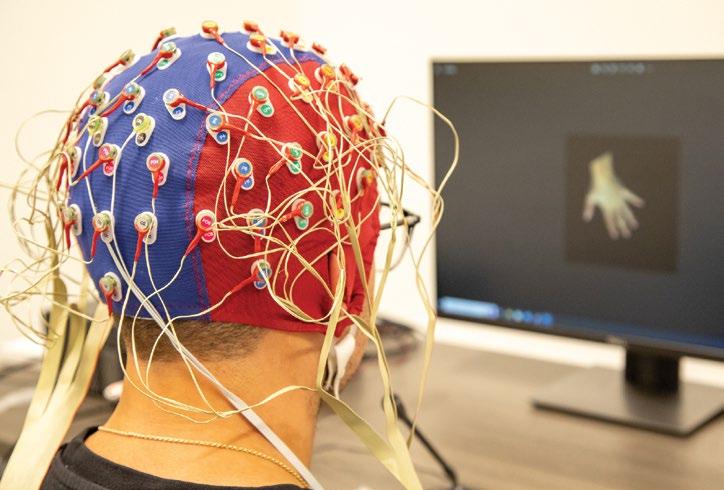
Below left: A researcher explaining the multisensory integration experiment
perspectives on these types of treatments. Roberta Vastano, Ph.D., a Postdoctoral Associate and a co-investigator in the study will utilize her expertise in cognitive neuroscience to investigate how paralysis alters the brain’s representation of the body and the relationship with neuropathic pain. Tapping into The Miami Project’s translational potential and Dr. Widerström-Noga’s successful history with iterative science, the project investigates both mechanistic and functional aims. Neuromodulation, in the form of transcranial direct current stimulation, is applied to a region of the brain known as the parietal cortex during a task requiring response to multiple incoming perceptual stimuli. The impaired multisensory integration following spinal cord injury is likely due to remapping of brain regions that represent parts of the body below the level of injury that now send altered or absent information back to the brain.
Now, for the first time bodily illusion combined with noninvasive electrical stimulation of the specific cortical brain area involved in sensory integration will be administered in a series as a potential interventions for the management of neuropathic pain. With participants enabled throughout the study to provide feedback on their experience, as Dr. Widerström-Noga does, as to participatorily arrive at a response to neuropathic pain that people actually like.
Interested in keeping up with the status of the study, or know someone who might qualify to participate? Visit our website www.themiamproject.org to find the contact information for the study team. As always, our Office of Education and Outreach can also help inform you about this work and connect you to the researchers. Get in touch via email mpinfo@med.miami.edu or phone 305-243-7108.
The Miami Project clinical researchers currently have several clinical trials and clinical studies available for people who have had a spinal cord injury; some are for acute injuries and some are for chronic injuries. The clinical trials are testing the safety and efficacy of different neuroprotective, reparative, or modulatory interventions. The clinical studies are investigating questions regarding exercise science, nutrition, rehabilitation training, pain, male fertility, aging, and brain-machine interface technology.
If you would like to be considered for these, or future Miami Project trials or studies, please see our Register for a Research Program section of our website, send us a message, or call The Miami Project Education Office at 305-243-7108.
- This is open only to people with severe injury to a peripheral nerve (in leg or arm) and is NOT open to people with a spinal cord injury
Purpose: To evaluate the safety of injecting one’s own Schwann cells along with nerve autograft (eg. sural nerve –the sural nerve is a sensory nerve in the leg) after a severe injury to a major nerve has occurred. The secondary purpose of this research project is to evaluate whether transplanted Schwann cells can enhance recovery of sensory and motor function.
Criteria (Inclusion): 18 – 65 years old; severe sciatic nerve injury; brachial plexus injury; and/or major injury of the arm or leg with nerve loss within the previous year.
Criteria (Exclusion): Unable to safely have an MRI, injury to legs that prevents the study doctor from being able to remove part of the sural nerve if needed; severe nerve injury with a gap length greater than 10 mm; history of radiation or cancer in the area of your nerve injury, which includes primary tumors of the nerve; currently pregnant or test positive for pregnancy upon enrollment; disease that the study doctor believes will interfere with participant’s safety or compliance in relation to the study procedures; history of active substance abuse; allergy to gentamicin; positive for HIV or Hepatitis B or C virus.
Status: Enrolling
Principal Investigators: Allan D. Levi, M.D., Ph.D. 305-243-4781
- This study is recruiting people within the first day or two after injury
Purpose: The purpose of the proposed clinical trial is to demonstrate the safety and efficacy of intravascular hypothermia as part of the early hospital management and treatment for acute cervical SCI. Each year in the US, there are over 11,000 new cases of para- and quadriplegia and 100,000 new cases of partial but permanent neurological losses due to acute SCI. Thus the potential for clinical hypothermia following SCI to improve neurological outcome has significant value. Many patients suffering SCI become permanently dependent on caretakers and become a financial liability to both the family and society. Hypothermia has the potential to improve outcome so that more patients suffering SCI can regain independent motor and sensory function and remain economically productive members of society. The use of modest hypothermia
through intravascular cooling may ultimately lead to better care of the patient with acute SCI and may also have more widespread uses in patients presenting with stroke or cardiac arrest. In the long-term, this research may lend support to the use of hypothermia that could in turn save money for the patients, hospitals, the government and society as a whole.
Criteria (Inclusion): 18 – 70 years of age, AIS Grade A – C, Glasgow Coma Scale ≥14, able to start hypothermia treatment within 24 hours of injury, non-penetrating injury. Patients urgently taken to the operating room for surgical reduction may also be included.
Criteria (Exclusion): > 70 years of age, AIS Grade D, hyperthermia on admission (>38.5ºC), severe systemic injury, severe bleeding, pregnancy, coagulopathy, thrombocytopenia, known prior severe cardiac history, blood dyscrasia, pancreatitis, reynaud’s syndrome, cord transection.
Status: Enrolling
Principal Investigator: Allan D. Levi, M.D., Ph.D.AMERICAN CLINICAL TRIALS NETWORK) -This study is recruiting people within the first day or two after injury
Summary: The Miami Project and UM Department of Neurological Surgery are part of the North American Clinical Trials Network (NACTN). NACTN is a network of institutions that is developing the infrastructure, methods, and skilled personnel needed to conduct trials for SCI. Presently, the collaborative centers are collecting natural history data from newly injured people to determine the medical and rehabilitative outcomes and complications that occur in people receiving standard of care. Participants are evaluated for one year post-injury. The Miami Project has already enrolled more than 35 people to this registry. This information will help determine the design of SCI clinical trials because we will better understand complications that are risky for interventions at specific times post-injury and what degree of spontaneous recovery would be considered normal for different types of injuries.
Purpose: The NACTN Spinal Cord Injury Registry is a network of clinical centers collecting de-identified data from patients admitted through the Emergency Department of a NACTN center at the time of injury with an initial (first time) spinal cord injury (SCI). Information will be collected on the natural history of SCI and course of treatment through the first 12 months from the date of injury or long as medically indicated. Data collected includes imaging information from CT
or MRI scans, neurological and general medical outcome and rehabilitation evaluation. No intervention is given other than standard of care for spinal cord injury, intensive monitoring, and frequent follow up care.
Criteria: Any patient male or female > or equal to 18 years of age with first time spinal cord injury caused by trauma and has neurological deficit with paralysis (weakness) or loss of sensation (touch), Has not received prior medical of surgical care for this injury at an intermediate hospital, Must give informed consent.
Status: Enrolling
Principal Investigator: James D. Guest, M.D., Ph.D.
Contact: George Jimsheleishvihi
INJURY - This study is recruiting people who have been recently discharged from inpatient rehab (within 2 months) Purpose: It is known that risks for heart and blood vessel disease (atherosclerosis) and abnormal sugar metabolism (diabetes) are elevated after SCI. The investigators don’t know whether individuals were ever told by their physician if have these risks, or currently have these risks. We are interested to determine if individuals with SCI are overweight, have abnormal sugar metabolism (insulin resistance or diabetes), have blood pressure that is too high, or have blood fats that are outside of acceptable ranges. This information will be measured and compared with the individuals’ clinical report of their physician’s or other health care professionals (nurses or therapists) advice of having these risks. As these risks may change with time after SCI, the Investigators are also interested in seeing whether this information changes after one and two years of living with a SCI.
Criteria: Motor complete or incomplete, C5-L1, traumatic spinal injury; 18 – 70 years old; within 2 months of discharge from initial rehabilitation post-injury.
Estimated Completion Date: Approximately 24 months total, including a screening visit to assess risk for heart, blood vessel disease, and blood sugar metabolism for the individual with SCI. Testing periods at time of enrollment, 12 months, and 24 months after.
Status: Enrolling Summer 2023
Principal Investigator: Mark S. Nash, Ph.D.
Purpose: To determine the cause of low sperm motility in men with SCI.
Criteria: Men; between 18- 45 years old; all levels of injury; any time post-injury.
Duration: Visit laboratory about once a month for 1 to 6 months.
Status: Enrolling open-ended.
Principal Investigator: Emad Ibrahim, M.D.
Purpose: To determine to what extent neuropathic pain following spinal cord injury (SCI) is reduced after a nonpharmacological treatment involving bodily illusion (BI) and transcranial Direct Current Stimulation (tDCS).
Criteria: Group I: SCI and chronic pain (SCICP) group: Men or women, fluent in English, 18-70 years of age who have: (1) Incomplete cervical injury (2) with persistent pain for a minimum of three months prior to entering the study that is at least moderate in severity, defined as ≥ 4 on a Numeric Rating Scale (NRS) ranging 0 to 10.
Duration: 13 visits. Visit 1 and Visit 13 last 3 hours. Visits 2 to 12 last 30 min each.
Status: Enrolling open-ended.
Principal Investigator: Eva Widerstrom-Noga, Ph.D.
Contact: Roberta Vastano, Ph.D
CORD INJURY - This study is recruiting people who were injured at least one year ago
Purpose: The goal of this study is to determine the effects of spinal cord injury on appetite and gut metabolism following 2 meals in adults with and without SCI.
Criteria: Men and women with complete and incomplete C3-L3 chronic (at least 1-year post-injury) spinal cord injury (AIS A, B, and C) over the age of 18 years old
Duration: 2 visits over the course of 2 weeks. Each study visit will take approximately 4-5 hours to complete.
Enrollment Open Until: 16 persons with and 16 persons without SCI are enrolled. Compensation is provided following study completion.
Principal Investigators: Dr. Gary J. Farkas
IN
WITH SPINAL CORD INJURIES - This study is recruiting people who were injured at least one year ago Purpose: To determine the effect of spinal cord injury (SCI) on the metabolism of fats following feeding of a liquid “mixed meal” containing 50% carbohydrates, 35% fat, and 15% protein. Secondarily, to determine the effect of pre-meal exercise on metabolism of fats from the meal.
Criteria: Men with and without SCI. SCI: motor complete or incomplete, C5-L1, traumatic or non-traumatic, nonprogressive spinal injury; 18-60 years old; ≥1 year postinjury. Neurologically intact: healthy; 18-60 years old.
Duration: Approximately 3-4 weeks total, including a screening visit to assess body composition and cardiorespiratory fitness for the SCI individual. Following assessment, two experimental trials will occur separated by approximately 1 week. Each full trial requires ~8.5 hr of testing.
Status: Enrolling open-ended (suspended due to COVID-19)
Principal Investigators: Dr. Kevin A. Jacobs / Mark S. Nash, Ph.D.
HYPOXIA AND SLEEP APNEA - This study is recruiting people who were injured at least one year ago
Purpose: The purpose of this study is to learn about the effect of sleep apnea and low oxygen on muscle strength and lung function in people with chronic spinal cord injury. You will be asked to briefly breathe in air with a lower than normal oxygen content (hypoxia) for 90 seconds at a time, several times during a 3-hour test (Acute intermittent hypoxia or AIH protocol). We will then measure your muscle strength and lung function after each test.
Criteria: To participate in this research study, all of the following must be true for a person: age greater than 18 years; have a spinal cord injury (SCI) for > 1 year. If you get invited back for the second part of the study you should be willing to participate in study measurements 3 days in a row and come back for follow-up on 2 additional visits.
Duration: Initially we will require an at home sleep study to see if you are eligible for the second part of the study. Participation will require 6 visits over the course of approximately 18 days; between 1-3 hours required each
visit to complete study measurements.
Status: Enrolling until 30 people complete the study.
Principal Investigators: Dr. Shirin Shafazand / Mark S. Nash,
Ph.D.THE SAFETY AND EFFICACY OF THE USE OF A BRAIN-COMPUTER INTERFACE-BASED ELECTROMAGNETIC FIELD TREATMENT IN THE MANAGEMENT OF CHRONIC SPINAL CORD INJURY (SCI) PATIENTS: A PILOT STUDY
- This study is recruiting people who were injured at least one year ago
Purpose: To evaluate the safety and efficacy of noninvasive, low intensity and low frequency electromagnetic fields targeting the central nervous system (CNS).
Application of electromagnetic fields will be administered as an adjunctive treatment along with physical therapy, with the goal of enhancing the recovery process in people with SCI.
Criteria: Incomplete, cervical-level spinal cord injury (AIS B-D); 12-30 months post-injury; 18-75 years old; GRASSP strength subscore of 5-35 on at least one side.
Duration: Approximately 34 weeks.
Status: Enrolling open-ended.
Principal Investigators: W. Dalton Dietrich, Ph.D.
ALTERED BODY REPRESENTATION IN PEOPLE WITH SPINAL CORD INJURY AND ITS ASSOCIATION WITH PAIN SENSATION - This study is recruiting people who were injured at least one year ago Purpose: To define changes in body ownership underlying compromised multisensory integration in spinal cord injury (SCI) individuals by using the rubber hand illusion procedure (RHI); ii) to determine the relation between compromised multisensory integration after SCI and its impact on pain.
Criteria: Group I: SCI and chronic pain (SCICP) group: Men or women, fluent in English, 18-50 years of age who have: (1) Incomplete, level of injury from (C2-T10); (2) persistent pain for a minimum of three months prior to entering the study that is at least moderate in severity, defined as ≥ 4 on an Numeric Rating Scale (NRS) ranging 0 to 10.
Group II: SCI no pain (SCINP) group: Same entry criteria as the SCICP group less the pain criterion.
Group III: Healthy control subjects group No Pain: Participants will be men or women, fluent in English, 1850 years of age who are non-injured and otherwise healthy.
Duration: 1 visit lasting 1.5 hour
Status: Enrolling open-ended.
Principal Investigator: Eva Widerstrom-Noga, Ph.D.
Contact: Roberta Vastano, Ph.D.
(SCIENCE) - This study is recruiting people who were injured at least one year ago
Purpose: The goal of this study is to assess the impact of home-based functional electrical stimulation leg cycle ergometry plus diet versus diet alone on body composition, insulin sensitivity, glucose effectiveness, and basal metabolic rate, as well as lower extremity bone mineral density, lipid profiles, and inflammatory markers in people with SCI. Participants will be randomized to either diet only or diet and exercise.
Criteria: Motor complete (AIS A, B & C); C4-T4 spinal cord injury; 18-65 years old; >=1 year post-injury
Duration: Approximately 21 weeks total, including a screening visit to assess eligibility. Study involves 6 visits (every 3-4 weeks) and exercise 3-5 days at home with a teleconference supervision (for exercise group) and weekly teleconference with a dietitian.
Enrollment Open Until: Until 40 individuals are enrolled.
Principal Investigator: Dr. Gary J. Farkas
Contact: Dinorah Rodriguez
DIET AND R&M - This study is recruiting people who were injured at least one year ago
Purpose: The purpose of this study is to determine the relationship between nutritional needs, metabolic health, and body composition of individuals with and without spinal cord injury. Participants will maintain a diet log at home, interview with a registered dietician, complete a body composition analysis, and participate in fasting blood draw and medical screening.
Criteria: Motor complete C4-L2 spinal cord injury (AIS A, B & C); Age 18-65 years old; Spinal cord injury (SCI) for > 1 year.
Duration: 2 study visits.
Enrollment Open Until: Open-ended
Principal Investigator: Dr. Gary Farkas
Contact: Dr. Gary Farkas
The Miami Project to Cure Paralysis believes in working with our local community to develop and implement strategies that can potentially treat paralysis.
The Miami Project to Cure Paralysis works ultimately for people living with paralysis due to spinal cord injury and other neurological conditions. Accordingly, The Miami Project’s Office of Education and Outreach, directed by David W. McMillan, Ph.D., engages the community at multiple levels both to spread an understanding of current efforts and to also get feedback to inform future endeavors. Together with the outreach team - Danielle Cilien, Maria Chagoyen, and Nilajana “Neil” Datta - the Office fields thousands of inquires, provides updates about current research studies, and liaises between The Miami Project’s scientists and those in the public with a vested interested in paralysis. Since its inception, the Office has been serving this role through recruitment information, resource and care referrals, partnership with like-minded organizations, and presentations via tours, lectures, and events. Now nested in the Christine E. Lynn Rehabilitation Center, the Office brings these services to the acute and in-patient hospital setting, providing people with new injuries a “portal into the pipeline”—as their slogan goes—at a sensitive and opportune time after injury.
The Miami-Dade County Public Schools’ Science, Technology, Engineering, Arts and Mathematics (STEAM) Expo returned to in-person services on February 4th, 2023, the first time since a multi-year online transition. The Office returned in force with the Brain Fair interactive nervous system exhibit, leading the reestablishment of the coalition of contributors who have delivered the Brain Fair in past years. In participation, there were groups from Leila M. Allen, Ph.D., of Florida International University, Stephanie Bingham, Ph.D., from Barry University, and students from Alexis Tapanes-Castillo, Ph.D., St Thomas University. Between the contributing professors, over two dozen undergraduate and graduate student volunteers delivered a variety of demonstrations and interactive
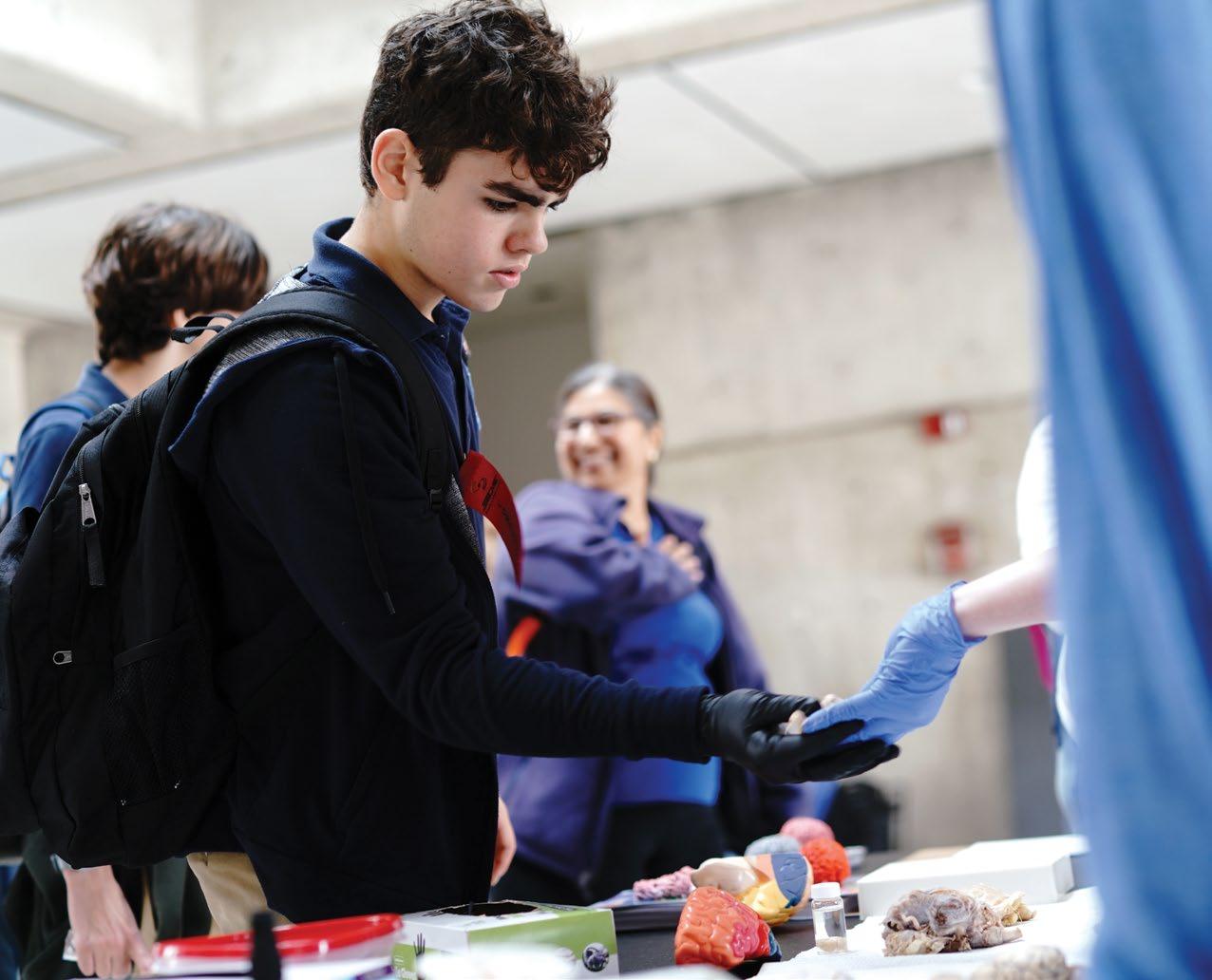
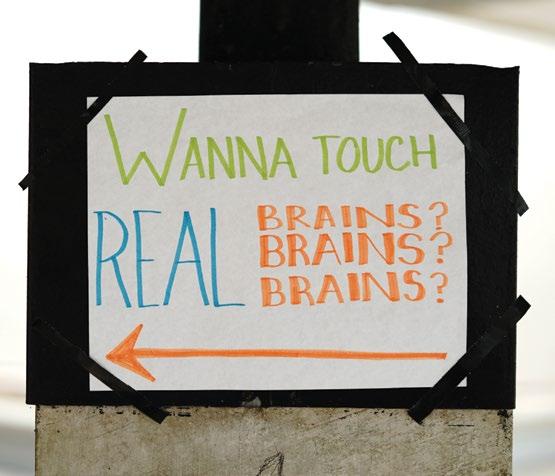
activities to the audience of younger, primary school aged attendees of the overall Expo. Along with the Brain Fair, the winner of the 2022 Brain Bee was also announced at the Expo’s award recipient ceremony on a stage in front a bustling crowd. The Brain Bee is an international neuroscience competition for teens, and the Office organizes and delivers the Miami Brain Bee competition for eligible students in our region. This year’s Miami Brain Bee winner was Sahana Sethuraman from Terra Environmental Research Institute a magnet high school in Miami-Dade.
Back in the Christine E. Lynn Rehabilitation Center for The Miami Project to Cure Paralysis at UHealth / Jackson Memorial, our professionals and the community they serve are taking advantage of the new facilities while also striving to create social bridges between the group that now spans two brick and mortar locations. In the Lois Pope LIFE Center, a research facility designed from the ground up for The Miami Project, researchers organically interacted with community members in the fitness center of the Clinical Lifestyle Program lead by Mark S. Nash, Ph.D. that now exists in the Lynn Rehabilitation Center. To encourage this
interaction across both buildings, stakeholders of all abilities are now invited to a lunch-break activity on the last Friday of the month. This “All Abilities Friday” practice invites all contributes to The Miami Project’s mission - researchers, clinicians, administrators, and of course those living with paralysis who participate in our studies - to interact in an informal setting. For one of the events a local boxing gym, Iron Fist Gym, hosted a boxing demonstration that was well attended.
Extending Dr. McMillan’s professorship into the recreational activities our SCI community celebrate, the Office has officially parterned with Shake-A-Leg Miami (SALM) to conduct a study. Located in the Coconut Grove waterfront area of Miami, SALM is an iconic group associated with The Miami Project by our co-founder Dr. Barth Green’s involvement since its inception nearly three decades ago. SALM utilizes the marine environment to improve the health, education, and independence of children and adults with physical, developmental, and economic challenges, in an inclusive community setting. The study will quantify the depth and breadth of what SALM identifies as the “healing powers of the sea.”

In addition to these and other community outreach efforts, the Office is also responsible for assisting the clinical research faculty with recruitment for their clinical studies and trials. Individuals interested in participating can come to the Office remotely or in-person where they will enter the “portal into the pipeline” starting with an intake form. Once the form, which helps researchers determine eligibility for certain studies, is processed the intake coordinator can discuss with potential participants the studies they qualify for, the broad requirements of the study(s), and the primary contact for the study if they are interested in participating. If you would like to be considered as a possible applicant for one or more of our current research studies, please complete the online intake form.
If you would prefer to complete the form later, please visit our homepage and click on the “Register now” tab on the top of the page. A huge and earnest thank you to all participants, both past and present, for volunteering to be in on-site studies and remote surveys!
If you have any questions or would like to contact our Education department, please email us at mpinfo@med. miami.edu or call us at 305-243-7108.
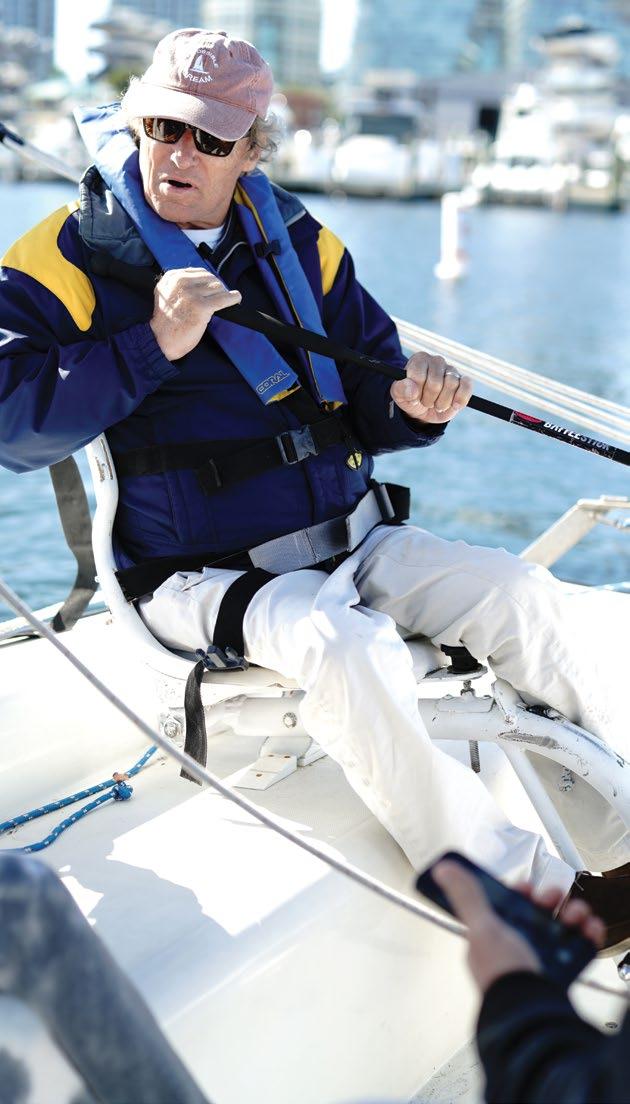

Each year, scientists at The Miami Project seek funding for their research by submitting proposals to the National Institutes of Health, the Department of Defense, and other funding agencies and foundations.
Their scientific peers rate the merits of the proposed experiments in a highly competitive process, and only the best projects are funded. The agencies and organizations listed here supported research at The Miami Project during 2022.
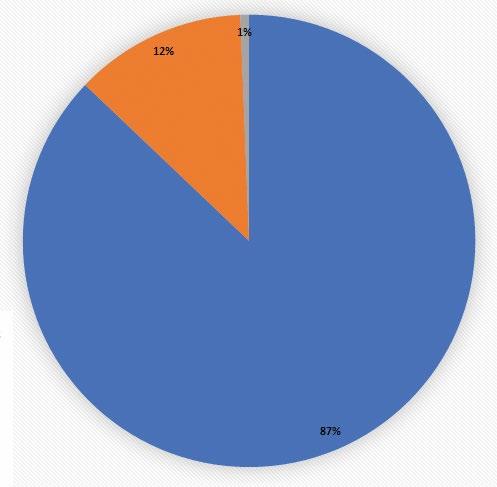

Abbott Istat Study
Brainscope II & Validation Study
Miami Dolphins Foundation Grant
Dr. Gillian Hotz (P.I.)
-MDCPSB: Countywide Concussion Injury Surveillance Systems
BrainQ Technologies Ltd.
Dr. W. Dalton Dietrich (P.I.), Dr. Katie Gant (Co-I.)
- The Safety and Efficacy of a BCI-based Electromagnetic Field Treatment in Chronic SCI – a Pilot Study
Bryon Riesch Paralysis Foundation (BRPF)
Dr. Dalton Dietrich (Study P.I.), Dr. Aisha Khan (Co-I), Dr. Mousumi Ghosh (Co-I.)
-Therapeutic Evaluation of Human Cell Exosomes for SCI.
Dr. Mousumi Ghosh (P.I.)
- Targeting innate immune response to promote histo pathological and locomotor function after spinal cord injury repair.
Christopher & Dana Reeve Foundation
Dr. James Guest (Center P.I. and Cochair)
-North American Clinical Trials Network and the Riluzole in Spinal Cord Injury Study
COPBC (FL Gen Rev FY21)
Dr. Brian Noga (P.I.), Dr. Sakhrat Khizroev (Co-PI).
Neuromodulation Strategies for Improving Autonomic and Motor Function after SCI. Project 1. Motor Function Improvement by Contactless DBS.
Consortium for Medical Marijuana
Clinical Outcomes Research (MMJ)
Dr. Jacqueline Sagen (P.I.)
-Evaluation of Medical Marijuana for the Treatment of Chronic Spinal Cord Injury
Pain Using a Rat Central Neuropathic Pain Model
Craig H. Neilsen Foundation
Vance Lemmon (PI) Dr. Hassan Al-Ali (Co-I)
-Novel and potent compounds that promote axon growth
Dr. Vance Lemmon (P.I.), Dr. John Bixby (Co-P.I.), Dr. Hassan Al-Ali, (Co-P.I.) Novel and potent compounds that promote axon growth
Dr. Mark Nash (P.I.)
-A Time-Course Study of Experimental Cardiometabolic Risk/Disease after SCI
Dr. Cathy Craven (Co-P.I.), Dr. Mark S. Nash (Co-P.I.), Dr. Kim Anderson (Co-I) -Effects of Statin Pleiotropisms on Cardioendocrine Functions after Spinal Cord Injury
Dr. Kevin Jacobs (P.I.), Dr. Mark Nash (Co. P.I.)
-Effects of Acute Exercise on Fuel Homeostasis after Spinal Cord Injury
Dr. Shirin Shafazand (P.I.), Dr. Mark S. Nash (Co-P.I.)
-Intermittent Hypoxia, Respiratory and Motor Plasticity, and Sleep Apnea
Dr. Mark Nash (P.I.)
-A PVA Consumer Guide Addressing Identification and Management of Cardiometabolic Risk
Dr. Eva Widerström-Noga (P.I.)
-Pain education for improving pain health literacy and quality of life after spinal cord injury
The intent of this proposal is to systematically evaluate a pain education tool for people with SCI who experience chronic pain.
Dr. Roberta Vastano (Co-P.I.), Dr. Eva Widerström-Noga (Co-P.I.)- EEG correlates of multisensory integration in spinal cord injury: sensory and pain mechanisms.
Dr. Gater (P.I.)
-Neilsen SCI Medicine Fellowship
Dr. Jacqueline Sagen (P.I.)
-Human iPSC-derived chromaffin cell transplants for alleviation of chronic neuropathic SCI pain
Craig H Neilsen Foundation SCIRTS Program
Dr. Shirin Shafazand (P.I), Mark Nash (Co-I.), Dr. Katie Gant (Co-I.)
- Intermittent Hypoxia, Respiratory Performance, and Motor Plasticity after Spinal Cord Injury
Dr. Cathy Craven (P.I.), Dr. Mark Nash (Co-P.I), Dr. Katie Gant (Co-I.)
- The Efficacy and Safety of Rosuvastatin for Modifying Bone Mass and Cardiometabolic Disease Outcomes Intermittent Hypoxia, Respiratory Performance, and Motor Plasticity after Spinal Cord Injury
Department of Defense
Dr. Mark Nash (P.I.), Dr. Katie Gant (Co-I.)
- Selective Pharmacological Inhibition of Myostatin with SRK-015P in a Contusion Model of SCI: Effects on Obesity, Muscle, and Cardioendocrine Pathology
Dr. Kevin Park (P.I.)
-Novel Combinatorial Approaches to Repair Visual System After Optic Nerve Damage
Dr. Sanjoy Bhattacharya (P.I.), Dr. Kevin Park (Co-I.)
- Regenerative Lipids in Traumatic Glaucomatous Neuropathies
Department of Defense (DOD)
Orthopedic Research Program of the Office of the Congressionally Directed Medical Research Programs
Dr. Jacqueline Sagen (P.I.)
Gene Therapy for Prevention of Phantom Limb Pain Following Extremity Injuries.
Department of Defense (DOD) Peer Reviewed Medical Research Program of the Office of the Congressionally Directed Medical Research Programs
Dr. Jacqueline Sagen (Co-I.) Dr. Stanislava Jergova, (P.I.)
- Recombinant GABAergic Cells as a Therapy for Chronic Neuropathic Pain
Department of Defense (DoD) Psychological Health and Traumatic Brain Injury Program of the Office of Congressionally Directed Medical Research Programs
Dr. Eva Widerström-Noga (P.I.)
-Utility of MRS Brain Biomarkers of Pain Phenotypes after TBI
Dr. W. Dalton Dietrich (P.I.), Dr. Helen Bramlett (Co-I.)
-Operation Brain Trauma Therapy Extended Studies
-The Importance of Temperature in the Pathophysiology of Mild Repetitive Brain Injury
Dr. W. Dalton Dietrich (P.I.), Dr. Helen Bramlett (Co-I.), Dr. Thomas Sick (Co-I.)
-The Use of Proneurogenic Molecules to Promote Recovery Following Acute and Chronic Traumatic Brain Injury
Department of Defense (DOD) Spinal Cord Research Program of the Office of Congressionally Directed Medical Research Programs
Dr. Jacqueline Sagen (Co-I) Dr. Li Niu, SUNY Albany, (P.I.)
-Testing RNA Aptamers as Analgesic Candidates in a Rat Model of SCI pain
Wang (Partner P.I.)
-Biomarkers for Spinal Cord InjuryRelated Medical Complications
Dr. Jae Lee (Co-P.I), Dr. Nagi Ayad (CoP.I.)
-Epigenetic Pathways in Spinal Cord Injury
Dr. Jacqueline Sagen (P.I.)
-Engineered Neural Progenitor Transplants in Combination with Exercise to Maximize Neuropathic Pain Reduction Following SCI
Dr. Jacqueline Sagen (P.I.) Developing Gene Therapies Targeting Cannabinoid Receptors for Treatment of Chronic SCI Pain
Dr. Eva Widerström-Noga (P.I.), Dr. Kim Anderson-Erisman (Co-I.), Dr. Alberto Martinez-Arizala (Co-I.)
-Perspectives in Management of Severe Neuropathic Pain After a Spinal Cord Injury
Dr. Jonathan Jagid (P.I.), Dr. Eva Widerström-Noga (Co-I.), Dr. Ian Hentall (Co-I.), Dr. Alberto MartinezArizala (Co-I.)
-Treatment of Pain and Autonomic Dysreflexia in Spinal Cord Injury with Deep Brain Stimulation
Dr. Brian Noga (P.I.), Dr. James Guest (O.Q.I.), Dr. Jonathan Jagid (Co-I.)
-Gait Ignition Using DBS Following SCI
Dr. Allan Levi (P.I.)
-Systemic Hypothermia in Acute Cervical Spinal Cord Injury – A Prospective Case Controlled Study
Dr. Jae Lee and Dr. Nagi Ayad (M.P.I.)
-Epigenetic Pathways in SCI
Dr. Brian Noga (P.I.), Dr. James Guest (Co-I.)
-Gait Ignition Using DBS Following SCI
Dr. W. Dalton Dietrich (P.I.), Dr. Michael Wang (Partner P.I.)
-Biomarkers for Spinal Cord InjuryRelated Medical Complications
Department of Health and Human Services/NIDILRR
Dr. Mark Nash (P.I.), Dr. Katie Gant (Co-I.)
- A Lifestyle Intervention Targeting Enhanced Health and Function for Persons with Chronic SCI in Caregiver/
Care-Receiver Relationships: Effects of Caregiver Co-Treatment
ENDO Pharmaceuticals, Inc.
Dr. Ranjith Ramasamy (PI), Dr. Emad Ibrahim (Co-I)
- University of Miami Men’s Health Training Program
FISM Fondazione Italiana Sclerosi Multipla (Italian Multiple Sclerosis Foundation)
Dr. Roberta Brambilla (P.I.)
-Molecular Mechanisms of the Protective Function of Oligodendroglial TNFR2: A New Therapeutic Target in Neuroimmune Disease
Florida Department of Transportation
Dr. Gillian Hotz (P.I.)
Transportation Alternative Program: School Age Pedestrian and Bicycle Education and Injury Prevention Program in MDC
Safe Routes to School: WalkSafe & BikeSafe Pedestrian and Bicycle Safety Program in the State of Florida
Transportation Alternative Program - WalkSafe/BikeSafe 5 E Model
-Middle School Bike Club
-Elementary School BikeSafe Program
Hyundai Hope on Wheels
Ines Lohse (PI) Dr. Hassan Al-Ali (CoI)
- High-throughput drug screen for pediatric sarcomas
Industry Sponsored Medtronic Inc.
Dr. Jonathan Jagid (P.I.)
-Stereotactic Laser Ablation for Temporal Lobe Epilepsy (SLATE) Trial
Industry Sponsored Grant
Boston Scientific Inc.
Dr. Jonathan Jagid (P.I.)
-Deep Brain Stimulation for Freezing of gait in Parkinson’s Disease
Mazor Robotics
Dr. Michael Wang (Site P.I.)
-ADDRESS: Adult Deformity Robotic vs. Freehand Surgery to Correct Spinal Deformity
-MIS ReFRESH: Robotic vs. Freehand Minimally Invasive Spinal Surgeries
National Eye Institute
Dr. Kevin Park (Multi-P.I.), Dr. Sanjoy Bhattacharya (Multi-P.I.), Dr. Vance Lemmon (Multi-P.I.)
-Novel Targets to Promote RGC Axon Regeneration: Insights from Unique RGC Cohorts
Dr. Kevin Park (P.I.)
-R21, Assessing axonal fate, myelination and visual function recovery after new gene treatment
Dr. Kevin Park (P.I.)
-R01, Regeneration and Reconnection of Damaged Optic Nerve
Dr. Ivanov Dmitri (P.I.), Dr. Kevin Park (Co-I.)
-R01, Mechanisms of Toll-like Receptormediated Neurotoxicity in the Ischemic Retina
Dr. Abigail Hackam (P.I.), Dr. Kevin Park (Co-I.)
-R01, Mechanisms of Optic Nerve Regeneration
National Institute of Child Health and Human Development
Dr. Vance Lemmon (Multi-P.I.), Dr. John Bixby (Multi-P.I.)
-Novel Gene Targets for CNS Axonal Regeneration
National Institutes of Health (NIH/ NINDS) – R25 NS108937-01
Dr. Allan Levi (P.I.)
-The University of Miami Neurosurgery Education Strategy (UMINDS)
National Institutes of Health (NIH/ NINDS) – R21 NS111334-01
Dr. Allan Levi (P.I.)
-Schwann cell delivery via enhanced collagen-glycosaminoglycan tubes to improve outcome from critical length nerve gap repairs
National Institutes of Health (NIH/ NINDS)
Dr. Ranjith Ramasamy (P.I.), Dr. Emad Ibrahim (Co-I)
- Disease Modifying Treatment Using Combined Shockwave Therapy and Platelet Rich Plasma In Microvascular Erectile Dysfunction
National Institute of Neurological Disorders & Stroke
Dr. Vance Lemmon (Co-PI), Dr. John Bixby (Co-PI), Dr. Hassan Al-Ali (Co-I),
-Targeting Multiple Kinases to Treat Experimental Spinal Cord Injury
Dr. Coleen Atkins (Co-P.I.), Dr. W. Dalton Dietrich (Co-P.I.)
- Cyclic Nucleotide Regulation in Traumatic Brain Injury and Alzheimer’s Disease and Brain Trauma
Dr. Coleen Atkins (P.I.), Dr. Thomas Sick (Co-I.)
-Rehabilitation Strategies for Memory Dysfunction after Traumatic Brain Injury
Dr. Coleen Atkins (Co-P.I.), Dr. W. Dalton Dietrich (Co-P.I.)
-Cyclic Nucleotide Regulation in Traumatic Brain Injury
Dr. Coleen Atkins (Co-P.I.), Dr. W. Dalton Dietrich (Co-P.I.)
-Cyclic Nucleotide Regulation in Traumatic Brain Injury
Dr. Roberta Brambilla (P.I.), Dr. Juan Pablo De Rivero Vaccari (Co-I.)
-Molecular Mechanisms of the Protective Function of Oligodendroglial TNFR2: A New Therapeutic Target in Neuroimmune Disease
Dr. Helen Bramlett (P.I.), Dr. W. Dalton Dietrich (Co-P.I.)
-A Novel Combination Strategy for Protection and Repair After TBI
Dr. Helen Bramlett (P.I.), Dr. W. Dalton Dietrich (P.I.), Dr. Daniel Liebl (Co-I.) –R01
-A Novel Combination Strategy for Protection and Repair After TBI
Dr. W. Dalton Dietrich (P.I.), Dr. Helen Bramlett (Co-I.)
-The Importance of Temperature on the Inflammatory and Microvascular Consequences of Mild TBI
Dr. W. Dalton Dietrich (Co-P.I.), Dr. Robert Keane (Co-P.I.), Dr. Juan Pablo De Rivero Vaccari (Co-I.)
-Therapeutic Neutralization of the Inflammasome after Spinal Cord Injury
Dr. Brian Noga (P.I.), Dr. James Guest (Co-I.)
-Gait Induction After SCI
Dr. Brian Noga (P.I.), Dr. James Guest (Co-P.I.), Dr. Jonathan Jagid (Co-I.)
-Gait Ignition After SCI
Dr. Jae Lee (P.I.)
-Targeting Lipid Clearance Pathways to Promote Repair After SCI
-Assessment of NOVO-118 as a Regenerative Therapeutic in Acute Spinal Cord Injury
Dr. Jae Lee (Co-I.)
-Targeting Multiple Kinases to Treat Experimental Spinal Cord Injury
Dr. Daniel Liebl (P.I.) – R01
-Stabilizing the Tripartite Synaptic Complex Following TBI
Dr. Nagi Ayad (P.I.), Dr. Daniel Liebl (Co-I.) – R01
-Epigenetic Pathways and Cell Cycle Exit
Dr. Nagi Ayad (P.I.)
-Epigenetic and Kinase Pathway Interactions in Medulloblastoma
Dr. Juan Pablo de Rivero Vaccari, (P.I.) Dr. Robert Keane (P.I.)
-The Role of ASC in TBI-Mediated Systemic Inflammation
Dr. Robert Keane (P.I.), Dr. Juan Pablo de Rivero Vaccari (P.I.)
-ZyVersa Therapeutic Research Contract
“Evaluation of IC100 Potency and Mechanism of Action”
Dr. Edelle Field-Fote (P.I.), Dr. Eva Widerström-Noga (Co-I.)
-Dose-response Effects of Whole Body Vibration on Spasticity and Walking in SCI
Dr. Grace Zhai (P.I.), Dr. Pantelis Tsoulfas (Co-I.)
-Mechanisms of Neuronal Maintenance and Protection
Dr. Jennifer Gewandter (Hub P.I.), John Markman (Hub P.I.), Dr. Eva Widerstrom-Noga (Site P.I.)
-EPPIC-Net clinical pain trial network (University of Rochester)
Dr. Abhishek Prasad (P.I.)
- Effects of Iron Accumulation in Intracortical Implants and Protection by Iron Chelation
Dr. Dr. Juan Pablo de Rivero Vaccari (P.I.)
- The Importance of Abnormal Inflammasome Activation as a Risk Factor between Traumatic Brain Injury and Alzheimer’s Disease
Dr. Patrick D. Ganzer (P.I.)
- Enhancing Sympathetic Outflow Control Following Spinal Cord Injury Using Targeted Plasticity Therapy
National Institute of Neurological Disorders & Stroke & NFL funding
Dr. Gillian Hotz (Site-P.I.), -Transforming Research and Clinical
National Institute on Disability, Independent Living, and Rehabilitation Research
Dr. David Gater (Co-Project Director) NIDILRR South Florida Spinal Cord Injury Model System (SFSCIMS
Dr. Mark Nash (P.I.), Dr. Kim AndersonErisman (Co-I.), Dr. Rachel Cowan (CoI.), Dr. Eva Widerström-Noga (Co-I.)
-A Lifestyle Intervention Targeting Enhanced Health and Function for Persons with Chronic SCI in Caregiver/ Care-Receiver Relationships: Effects of Caregiver Co-Treatment
Dr. Heather Taylor (P.I.), Dr. Eva Widerström-Noga (Co-I.)
-The Relations among Pain, Depression, and Resilience and their Prediction of Life Satisfaction in Men and Women with Spinal Cord Injury
Dr. Elizabeth Felix (Co-P.I.), Dr. Mark Nash (Co-P.I.), Dr. Eva WiderströmNoga (Co-I.)
-South Florida Spinal Cord Injury Model Systems
National Institute of Health
Dr. David Gater (P.I.)
-Spinal Cord Injury Exercise and Nutrition Conceptual Engagement (SCIENCE).
National Multiple Sclerosis Society
Dr. Roberta Brambilla (P.I.)
- Developing selective TNF-TNFR2 binding stabilizers to promote remyelination and repair in multiple sclerosis
New Jersey Commission on Spinal Cord Research
Dr. Ki Bum Lee (P.I.), Dr. Jae Lee (Co-I.)
-A Biodegradable Nanoscaffold for the Co-Delivery of Patient Derived Neural Stem Cells and BET Inhibitor for Anti-
Inflammation and Synaptic Restoration Post-SCI
NINDS 1R21NS115185
Dr. James Guest (P.I.)
-Title. Modulation of balance and posture using epidural stimulation after SCI.
Onward Medical
Dr. James Guest (Site P.I.)
- Modulation of balance and posture using epidural stimulation after SCI.
Paralyzed Veterans of America
Dr. Mark Nash (P.I.), Dr. Katie Gant (Co-I.)
-A PVA Consumer Guide Addressing Identification and Management of Cardiometabolic Risk
Dr. Emad Ibrahim (P.I.)
- How to Manage Reproductive and Sexual Dysfunction in Men with Spinal Cord Injury? A Provider Workshop.
Pfizer, Inc.
Dr. Michael Wang (Site P.I.)
-STRIVE: Staphylococcus Vaccine Trial for Elective Spinal Surgery
R211NS115185 NINDS: 2019-2021
Dr. James Guest (P.I.), Dr. Brian Noga (Co-I).
-Can Spinal Cord Epidural Stimulation Increase the Efficacy of Midbrain Excitation of Locomotor Circuits?
State of Florida (COPAC)
Dr. Dalton Dietrich (Study P.I.), Dr. Damien Pearse (Project P.I.), Dr. Mousumi Ghosh (Project Co-I.)
-Therapeutic utility of cell-derived exosomes after SCI.
State of Florida
Dr. Jacqueline Sagen (P.I.)
- Reducing Opioid Abuse Liability Using Gene Therapy
SAC ITS-Pilot Award- Co-Sponsor: Boston Scientific Investigator Sponsored Research (ISR)
Dr. Johnathan Jagid (P.I.), Dr. Brian Noga (Co-P.I).
-Deep Brain Stimulation of the Cuneiform Nucleus for LevodopaResistant Freezing of Gait in Parkinson’s Disease.
SAC Award
Dr. Jonathan Jagid (P.I.)
-Deep Brain Stimulation for Freezing of gait in Parkinson’s Disease
State of Florida Brain and Spinal Cord Injury Program, Department of Health, and Red Light Camera Fund
-These three state funds contribute to several research programs within The Miami Project to Cure Paralysis
State of Florida, James and Esther King Biomedical Research Program
Dr. W. Dalton Dietrich (P.I.)
-The Therapeutic Effect of P7C3-A20 on Stroke
Dr. Helen Bramlett (P.I.), Dr. W. Dalton Dietrich (Co-I.)
-Whole Body Vibration Improves Stroke Outcome
State of Florida, James and Esther King Biomedical Research
Dr. Helen Bramlett (P.I.)
-Whole Body Vibration Improves Stroke Outcome
Dr. Dalton Dietrich (P.I.)
- The Importance of the Innate Immune Response as a Mechanistic Link between TBI and AD
Dr. Juan Pablo De Rivero Vaccari (P.I.), Robert W. Keane (P.I.)
-The Role of ASC in TBI-Mediated Systemic Inflammation
Dr. Juan Pablo De Rivero Vaccari (P.I.), Robert W. Keane (P.I.)
-Sponsored Research Agreement –ZyVersa Therapeutics, Inc.
Dr. Juan Pablo De Rivero Vaccari (P.I.). -Contribution of the Inflammasome to Inflammaging
Dr. Juan Pablo De Rivero Vaccari (P.I.).
- Inflammasome Regulation in Brain Inflammaging and Alzheimer’s Disease
Dr. Juan Pablo De Rivero Vaccari (P.I.). -Inflammatory Biomarkers in Acute Ischemic Stroke
Dr. Roberta Brambilla (P.I.), Dr. Juan Pablo De Rivero Vaccari (Co-I.)
-Molecular Mechanisms of the Protective Function of Oligodendroglial TNFR2: A New Therapeutic Target in Neuroimmune Disease
Dr. Robert Starke (P.I.)
- Cigarette smoke induces endothelial dysfunction leading to cerebral aneurysm pathogenesis
Sylvester Comprehensive Cancer Center Pilot Award
Dr. Hassan Al-Ali (Co-PI) and Jonathan Schatz (Co-PI) -Developing a SmallMolecule Lymphoma Drug with Potent, Efficacious, and Tumor-Specific Activity
The Childhood Brain Tumor Foundation
Dr. Nagi Ayad (P.I.)
-A Novel CK1δ/Brd4 Pathway for the Treatment of Medulloblastoma
UM Dean’s Bridge Funding Program
Dr. Nagi Ayad (P.I.)
-Epigenetic and Kinase Pathway Interactions in Medulloblastoma
U.S. Army Medical Research Acquisition Activity
Dr. S. Shelby Burks (P.I.)
-Nerve transfers to improve upper extremity function and quality of life in tetraplegic patients
VA Rehabilitation R&D Service
Dr. Coleen Atkins (P.I.)
-The Interaction of Stress and Mild Traumatic Brain Injury
Veterans Administration Rehabilitation Research and Development
Dr. Christopher Cardozo (P.I.), Dr. Helen Bramlett (Co-I.)
-Role of Ryanodine Receptor Dysfunction
Dr. Weiping Qin (P.I.), Dr. Helen Bramlett (Co-I.)
-Novel Pharmacological and Nonpharmacological Interventions for Bone Loss in SCI
Dr. Mousumi Ghosh (P.I.), Dr. Damien Pearse (Co-P.I.), Dr. Jacqueline Sagen (Co-P.I.)
-Modulating Microglial Phenotype to Prevent SCI-induced Central Neuropathic Pain
Dr. Jacqueline Sagen (P.I.)
-Innovative treatment for neuropathic pain after spinal cord injury (SCI-NP).
Wallace H. Coulter Foundation
Dr. Hassan Al-Ali, (P.I.), Dr. John L. Bixby (Co-I.), Dr. Vance P. Lemmon (Co-I.),
-Developing a Multi-Target SmallMolecule Drug for Treating CNS Injuries
WHCC Translational Research Grant ($125,000)
Dr. Claes. Wahlestedt (PI) Dr. Hassan Al-Ali (Co-I)
-Developing the drug sensitivity platform for IDE submission. The goal of this translational study is to develop a clinical candidate for promoting CNS axon regeneration to treat CNS injuries. The proposal seeks to commercially develop a drug sensitivity testing (DST) platform for the use in patients with refractory/ relapsed AML.
Role: Co-Investigator
The faculty of The Miami Project are a talented multidisciplinary team. In the following Profiles, each faculty member describes their specific research focus and highlights of recent progress.
W. DALTON DIETRICH, PH.D. Scientific DirectorKinetic Concepts Distinguished Chair in Neurosurgery
Senior Associate Dean for Discovery Science
Professor, Departments of Neurological Surgery, Neurology, and Cell Biology
Neuroprotection and Improved Recovery of Function following CNS Trauma
My research interest is the pathobiology and treatment of CNS injury in both the acute and chronic setting. Animal models of spinal cord injury, traumatic brain injury, and stroke are utilized to investigate the cellular and molecular mechanisms of tissue injury. The ultimate goal is to target secondary injury processes for various interventions that may protect vulnerable cell types or promote reparative processes to enhance neuroprotection, circuit plasticity, and recovery of function. The use of therapeutic hypothermia and targeted temperature management in preclinical and clinical settings is currently a focus of discovery and clinical investigations in the laboratory.
ALLAN D. LEVI, M.D., PH.D., F.A.C.S.Robert. Buck Distinguished Chair in Neurological Surgery

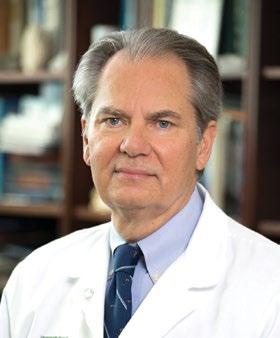
Professor, Departments of Neurological Surgery, Orthopedics, and Physical Medicine & Rehabilitation
Chairman, Department of Neurological Surgery
Chief of Neurosurgery, Jackson Memorial Hospital
Cellular Transplantation Strategies after SCI/Systemic Hypothermia after Acute SCI
My clinical research interests currently focus on developing cellular transplantation strategies to repair injuries within both the human central and peripheral nervous system. I am currently Co-PI on our clinical trials involving the transplantation of autologous human Schwann cells (SCs), which represent first-in-man studies of autologous human SCs for patients with sub-acute and chronic SCI. We are also conducting a phase I trial evaluating SCs for peripheral nerve injuries with long segmental defects, which follows up on our previous two single patient experiences. Hypothermia continues to show promise in a variety of acute central nervous system injuries. There are various factors that need to be considered with systemic cooling of the SCI patient, including methods of cooling, window from injury to initiation, duration and depth of hypothermia, rate of re-warming, etc. While profound levels of hypothermia (<32°C) can be difficult to administer and are subject to increased complication rates, mild (modest) levels of hypothermia (32-34°C) have been shown to provide significant protection against traumatic and ischemic neuronal cell death. I am currently the PI of our institutional protocol as well as a multi-center Department of Defense funded randomized trial studying systemic hypothermia induced via an intravascular catheter and continued for 48 hours after acute cervical SCI.
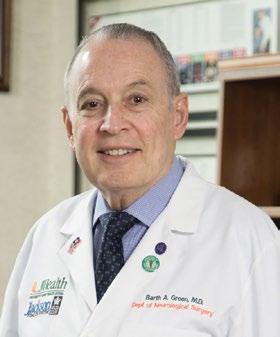
Over the recent years my research efforts have mainly involved taking the cutting edge basic neuroscience work product and data created by our Miami Project team from the bench to our UM affiliated clinics and hospitals. A good example of such translational research efforts has included the use of modest hypothermia for neuroprotection both in cases of acute spinal cord injury and for use in the operating room for patients undergoing high risk spinal cord surgery. I am also privileged to be able to collaborate with The Miami Project cellular transplantation programs and have been working on projects involving adult mesenchymal stem cells, as well as being part of the major effort transforming our successful Schwann cell laboratory model into clinical trials. Other areas of research and clinical interest include the diagnosis and treatment of tethered cord syndrome, spinal cord cysts and Chiari I malformation.
As a chemical and computational biologist, my lab focuses on identifying pharmacological targets that can induce robust axon regeneration in the injured central nervous system. To accomplish this, my lab developed a unique drug discovery platform that combines phenotypic screening, target-based profiling, and sophisticated machine learning algorithms. The approach identified a promising drug candidate that is now in preclinical development. We continue to develop these methodologies to advance drug discovery in spinal cord injury, as well as in other therapeutic areas including cancer and kidney disease.
COLEEN ATKINS, PH.D. Associate Professor, Department of Neurological Surgery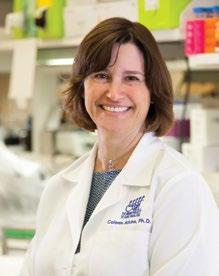
The research in my laboratory focuses on developing novel therapeutic interventions for traumatic brain injury (TBI) and spinal cord injury (SCI). The research goal of my laboratory is to enhance rehabilitation and recovery by manipulating synaptic plasticity at specific levels of the neuroaxis following TBI and SCI. We have found that specific synaptic plasticity signaling pathways are altered after TBI, and we are currently using pharmacotherapies to target those pathways to improve behavioral recovery after TBI.
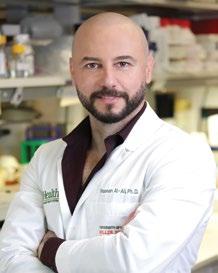
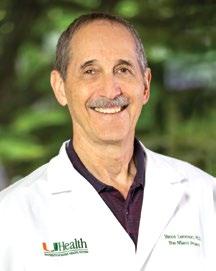
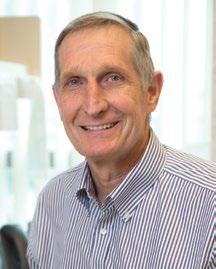
High Content Screening and Functional Genomics of the Nervous System
Our laboratory has developed methods to test thousands of genes or chemicals in hundreds of thousands of neurons each week to obtain quantitative information about cell morphology and gene expression. This “high throughput” capability allows us to tackle questions about axon growth and regeneration using systems biology approaches, and to query the results in animal models of injury. The Lemmon-Bixby lab has several ongoing projects related to axon regeneration. One project is to test the roles of known signaling proteins called protein kinases. In this screen we have tested >1600 kinase inhibitors, dozens of which strongly promote neurite growth in vitro. Using bioinformatics, biochemistry, and machine learning we can identify key kinases and their signaling networks as well as potential lead therapeutic compounds, one of which has proven active in two different models of spinal cord injury. A second project is based on the observation that injured peripheral sensory neurons initiate a genetic program appropriate for axonal regeneration. Our laboratory has combined next-generation sequencing with cell-based phenotypic screening to identify genes, especially transcription factors, that appear to mediate this genetic program, and is testing them in vitro and in vivo. The last project is to test several hit compounds identified in a screen testing 440 million different small molecules to see if the hits promote axon regeneration.
Associate Professor, Department of Neurological Surgery
Modulation of the Neuro-Immune Response in Neurologic Disease
The main focus of my research is to understand the role of neuroinflammation in the pathophysiology of neurodegenerative disorders (e.g., multiple sclerosis, spinal cord injury and stroke), with a specific interest in the contribution of glial cells. We study astrocytes and microglia for their involvement in the neuro-inflammatory response to injury, and oligodendrocytes and oligodendrocyte precursor cells for their role in axon myelination, metabolic support of neurons and myelin repair. Currently, our primary lines of research in the area of neuroimmunology are centered on: (1) investigating the role of tumor necrosis factor and its receptors in the processes of neuroinflammation, demyelination and remyelination, and (2) understanding how mitochondrial dysfunction in oligodendrocytes may be involved in the etiopathology of multiple sclerosis.
HELEN M. BRAMLETT, PH.D. Professor, Departments of Neurological Surgery and Psychology, Undergraduate Neuroscience Program Director, and Health Scientist Veterans Affairs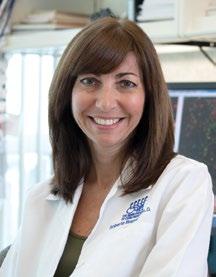
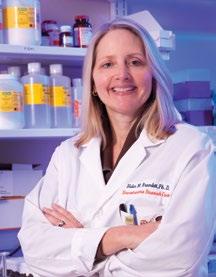
The focus of my neurotrauma laboratory is to investigate both acute and long-term consequences of brain and spinal cord trauma. My current research interests are on the pathophysiology of traumatic brain and spinal cord injury with an emphasis on the pathogenesis of progressive white matter damage as well as the benefits of therapeutic hypothermia. My laboratory is also investigating mechanistic events leading to the development of posttraumatic epilepsy. Additionally, our current work is also focusing on complex traumatic brain injury models that mimic polytrauma as this type of injury has become more prevalent in combat areas.
Research Assistant Professor, Department of Neurological Surgery
Underlying Mechanisms of the Immune Response and Contributions to Various CNS Diseases
My research focuses on understanding early inflammatory events in central nervous system (CNS) injury and disease, as well as aging. Currently, my laboratory studies how natural-aging produces inflammation in the brain, a phenomenon known as brain inflammaging, which potentially precedes the onset of age-related neurodegenerative diseases. In addition, we are studying the mechanism by which brain injury causes systemic inflammation such as acute lung injury. Moreover, we also study the prognostic and diagnostic potential of inflammasome proteins as biomarkers of CNS injury and disease, including brain and spinal cord injury, stroke, multiple sclerosis, mild cognitive impairment and depression.
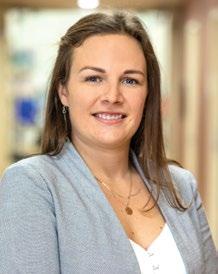
Assistant Professor, Department of Biomedical Engineering
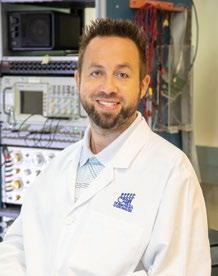
We are currently exploring the integration of nanoscale biomaterials with our scaffolds to improve on-demand pharmacological agent localization within the injury site as well as cytokine scavenging capabilities to reduce inflammation. Together, these strategies will help to move the field of neural tissue engineering forward, while also providing essential information about the underlying cellular biology and injury pathophysiology.
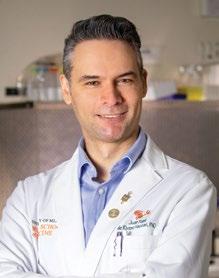
Neural Engineering, Brain-Computer Interfaces, Bioelectronic Medicines and Machine Learning
Broadly we are focused on the role that bioelectronic medicines will play in the understanding and treatment of neurological conditions, with a special focus placed on the importance of timing of stimulation with biologically relevant events. I come to The Miami Project from a background of research focused on enhancing neuroplasticity after sensorimotor injury using targeted vagus nerve stimulation, notably as a Principal for Battelle Memorial Institute’s Bioelectronic Medicine program and the N3 program funded by DARPA. I carry on my work with vagus nerve stimulation, and expand my lab via The Miami Project to understand and steer the somatic and autonomic nervous system after spinal cord injury (SCI).
My research interests are focused on altering the hostile environment of the injured or diseased CNS to one that is conducive to repair through altering inflammation. Specifically, our work focuses on delineating the intrinsic and extrinsic signals present after injury that antagonize the conversion of activated microglia and macrophages to a reparative phenotype in experimental models of CNS injury and disease. We are also interested in understanding how altering the immunophenotypical profile of macrophages and microglia can modulate spinal cord injury induced central neuropathic pain, affect host glial responses, including glial scar formation, as well as influence the ability of transplanted cells, such as Schwann cells and stem cells, to mediate neurorepair.
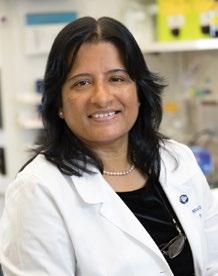
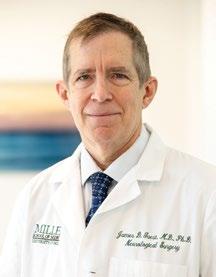
The Preclinical to Clinical Spectrum in Spinal Cord Injury Therapeutics. The Path to Clinical Testing and Establishing Clinical Evidence
Our SCI research spans preclinical proof-of-concept studies of therapeutics into early Phase, and pivotal clinical trials of SCI. We are translational scientists using a variety of clinicallyrelevant tools within the complex process of determining which potential human therapeutics have a probability of success in clinical trial testing. We use our experience and expertise to test combinations of cellular, molecular, tissue engineering and neuromodulatory therapeutics in large animal models. We have expertise in tissue physiologic monitoring, neurophysiology and kinematic analysis of gait. In addition, we have experience in device development and testing. The lab group has members and colleagues ranging from senior medical faculty to postdoctoral students, medical students, neurosurgery residents, and undergraduate students. This is a good setting for those trainees who aim for careers in neurologic therapeutics both in academia and industry and with an interest in how medical evidence is developed. We are simultaneously involved with animal and human studies across the translational spectrum including Phase 1-3 studies.
GILLIAN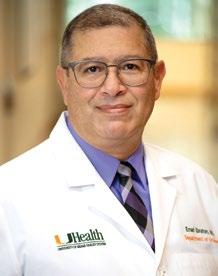

As a behavioral neuroscientist my clinical interests have always been investigating the neurocognitive deficits of those individuals that have sustained a traumatic and acquired brain injury. I have co-authored two neurocognitive tests, The Brief Test of Head Injury for adults and the Pediatric Test of Brain Injury for children. My research has focused on developing evidence based injury prevention programs in order to prevent brain and spinal cord injuries in children. In 2003, our team developed the WalkSafe program, which has been shown to decrease the number of elementary school age children that get hit by cars, and in 2009 we developed the BikeSafe program which educated middle school age children on bicycle safety skills. As the Director of the Concussion Program, we have spent many years developing and implementing a comprehensive countywide high school sports concussion care program, which includes neurologic evaluation, neuroimaging, neuropharmacological management, neuropsychological testing, and baseline test with ImPACT, a computerized neurocognitive screening measure. We also have developed a Concussion Injury Surveillance system. Our program is multidisciplinary and assesses and treats athletes from all levels of play. I am also the PI on many local and federal grants: Safe Routes to School initiatives, Transportation Alternative Programs, GE/NFL MRI Phase 2 study, Brainscope EEG study, one of the TRACK TBI sites, and a new project that will study the Effects of Cannabinoids on Mild TBI.
EMAD IBRAHIM, M.D., HCLD Assistant Profesor, Departments of Urology and Neurological SurgeryThe research is focused on understanding and improving the impairments to male fertility which occur following spinal cord injury (SCI). Following SCI, most men, but not women, experience impaired fertility. Specifically, most men with SCI are anejaculatory, and some experience erectile dysfunction. Although their semen may be obtained by medically-assisted ejaculation procedures, in most cases, semen quality is impaired, specifically, sperm motility and viability are abnormally low, although sperm numbers tend to be normal.
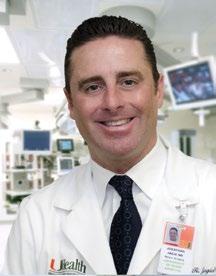
Interventions in SCI and TBI
My research includes projects investigating the use of Deep Brain Stimulation for spinal cord injury, novel brain machine interfaces to improve quality of life in spinal cord injury, as well as hypothermia for traumatic brain injury. Presently, we are looking at the use of a novel Deep Bain Stimulation device modified to act as a brain machine interface in an effort to bypass spinal cord injury and restore cortically controlled limb movement.
STANISLAVA JERGOVA, PH.Research Assistant Professor
Our lab’s research goals involve investigating potential cell and gene therapies for chronic pain induced by spinal cord injuries (SCI) and other injuries of the central nervous system. We aim to better understand the mechanisms of chronic pain and develop new treatment options that can provide long-lasting relief for patients. As chronic pain is a multifactorial condition with several pathways involved, simultaneous targeting of different pathways with precise localization is essential. Recombinant cells and designed analgesic genes provide a great tool to achieve our goal. We explore different biomaterials as delivery vehicles to develop safe and potent approach to combat chronic pain.
ROBERT W. KEANE, PH.D. Professor, Departments of Physiology & Biophysics, Neurological Surgery, and Microbiology and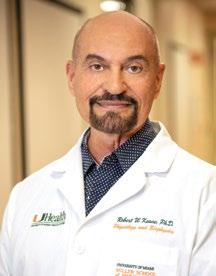
Immunology
Regulation of Innate Immunity after CNS Trauma
Innate immunity is the first line of defense against pathogens and host-derived signals of cellular stress. My research focuses on investigating mechanisms that direct normal innate immunity and its dysregulation in central nervous system injury and disease, including (1) agonists and activation mechanisms of inflammasomes, (2) regulatory mechanisms that potentiate or limit inflammasome activation after injury, and (3) emerging data linking inflammasome proteins as biomarkers for CNS injury.
NADINE A. KERR, PH.D. Assistant Professor, Department of Neurological Surgery
The focus of our research is to examine the pathomechanisms of the systemic inflammatory response and non-neurological organ dysfunction following Central Nervous System (CNS) injury, particularly traumatic brain injury (TBI) and stroke. After CNS injury and damage to the blood-brain barrier (BBB), inflammatory mediators are released into the circulation and contribute to systemic organ damage. This can then lead to further neurological damage resulting in bidirectional communication between the brain and systemic organs. The two main organ systems that we are currently investigating are the respiratory and gastrointestinal systems.
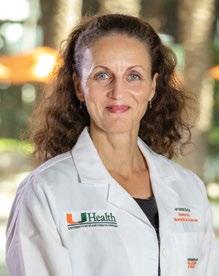
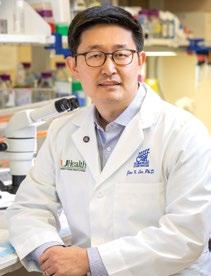
Associate Professor, Department of Neurological Surgery
Promoting Proper CNS Wound Healing Response to Enhance Regeneration
The long-term research goal in my laboratory is to elucidate the mechanisms of cellular interactions in the injured CNS that create an environment inhibitory to cellular regeneration. Similar to other tissue, injury to the CNS triggers a wound healing response characterized by inflammation, cellular proliferation, and matrix remodeling. Sometimes this wound healing response is incomplete and leads to tissue cavitation, while other times it is excessive and leads to scar formation (both gliotic and fibrotic). A better understanding of this scarring process will help identify novel therapeutic targets that can promote a more permissive environment for CNS regeneration.
DANIEL J. LIEBL, PH.D.
Professor, Department of Neurological Surgery
Molecular Mechanisms that Regulate Cellular Dysfunction and Death Following CNS Injury, and Mechanisms to Promote Regeneration and Recovery
The goal of my laboratory is to identify the mechanisms that lead to CNS pathophysiology and its regenerative potential. We focus on growth and guidance molecules, which play important roles in the developing, regenerating, and injured nervous systems. Specifically, we are currently interested in areas of adult neurogenesis, neuroprotection, apoptotic cell death, synaptic plasticity, angiogenesis, regeneration, and therapeutic strategies. Overall, our approach is to develop novel strategies to minimize CNS damage and maximize regeneration/tissue repair, which can be best achieved through a comprehensive mechanistic approach.

Clinical
M.D., F.A.A.N. Associate Professor, Departments of Neurology, Neurological Surgery, andOrthopedics and Rehabilitation Medicine
Pathophysiology and Treatment of Secondary Complications in Spinal Cord Injury
My research interests focus on common complications that are seen following spinal cord injury: pain, spasticity, syringomyelia, and tethered cord syndrome. My interests include investigating the basis for the development of the different spasticity and pain profiles in the spinal cord injured population and to study potential novel treatments for those conditions.
DAVID W. MCMILLAN, PH.D. Director of Education and Outreach, The Miami Project Research Assistant Professor, Department of Neurological Surgery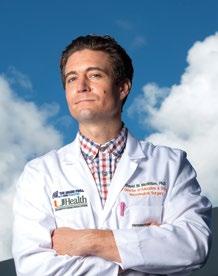
My dissertation pertained to the role of the autonomic nervous system in the absorption, trafficking, and fates of dietary fat. I am now refocusing my efforts to align with local opportunities seen from my Outreach role—aiming at the disproportionate risks and rewards posed by the Tropical Atlantic on people living with SCI (PwSCI). Regarding risks, I study the vulnerabilities of PwSCI to climate hazards in the form of flooding, heat, and hurricanes. Regarding rewards, I study the transformative potential that adapted ocean activities—such as sailing, scuba diving, swimming, and others—carries for adults with physical disability.

Associate Scientific Director for Research, The Miami Project to Cure Paralysis

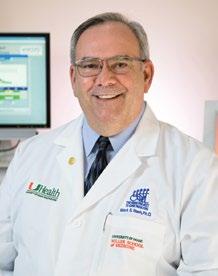
Professor, Departments of Neurological Surgery, Physical Medicine & Rehabilitation, Physical Therapy, and Kinesiology & Sports Sciences
Physiological Assessment of Secondary Complications following SCI: Electrical Stimulation, Cardiometabolic and Vascular Physiology, Cardioendocrine Pathology and Intervention, and Exercise and Nutritional Biochemistry
One of the enduring goals of The Miami Project has been to test and then translate strategies that optimize health of persons with SCI. A significant target for this strategy has focused on physical activity to lessen secondary risks of SCI associated with physical deconditioning. We also examine complementary themes to optimize exercise prescription after SCI, identify optimal nutritional intake, and use prescription and non-prescription agents that reduce hazards of fasting and postprandial lipid disorders, dysglycemia, and vascular inflammatory stress.
BRIAN R. NOGA, PH.D. Research Associate Professor, Department of Neurological SurgeryBrain and Spinal Mechanisms Controlling Walking
Neuromodulation technologies are increasingly looked at as potential treatment options for paralysis associated with spinal cord injury (SCI). Deep brain stimulation is one such method that so far has had little or no application in persons with SCI even though most new and chronic injuries are incomplete. Recent work in our laboratory has pointed to a brain target for controlling walking. We are currently investigating the usefulness of stimulating this site to enhance walking in a translational large animal model of SCI.
KEVIN K. PARK, PH.D.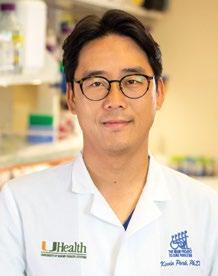 Associate Professor, Department of Neurological Surgery
Associate Professor, Department of Neurological Surgery
Promoting Neural Regeneration and Survival
My lab is interested in understanding mechanisms that account for axon growth, guidance and circuit formation in the central nervous system (CNS). Previously, I and others have identified several key proteins that regulate axon regeneration, which are present in mature CNS neurons. In my current research, I seek to better understand the cellular and molecular mechanisms governing axon growth and connectivity during development and in adults after injury, and to explore the potential of developing therapeutic strategies for spinal cord injury and other neurodegenerative conditions.
DAMIEN D. PEARSE, PH.D.
John M. and Jocelyn H.K. Watkins Distinguished Chair in Cell Therapies
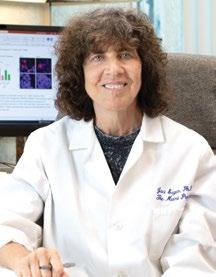
Professor, Department of Neurological Surgery, Health Scientist Veterans Affairs
Exploration and Translation of Therapeutic Strategies to Repair the Injured Spinal Cord and Brain
My laboratory focuses on several key aspects of CNS injury repair, including (1) the utility and clinical translation of exogenous and endogenously harnessed cell therapeutics (particularly when used in combinatory approaches), (2) understanding the role of, and developing therapies for, altered cyclic AMP (adenylyl cyclase, phosphodiesterases, and PKA) and MAPK signaling in neurons and glia after CNS injury, (3) the use of nanotherapeutics for multifunctional and site-directed gene/drug targeting to the injured CNS, and (4) the application of methodologies for improved imaging of axonal regeneration and cell integration within the injured CNS such as 3D ultramicroscopy and diffusion tensor imaging.
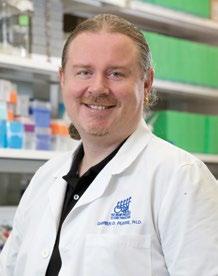
ABHISHEK PRASAD, PH.D.
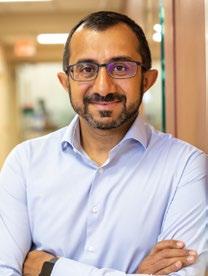
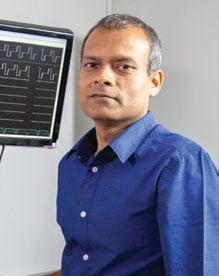
Associate Professor of Biomedical Engineering
Our lab is investigating better and alternate materials for electrodes and insulation that will minimize the corrosion and delamination problem. To mitigate the foreign body response due to implanted materials, we are using therapeutic and pharmacological approaches to reduce the neuroinflammation and oxidative stress that occurs after an electrode implant.
SUHRUD M. RAJGURU, PH.D.
Co-Director, Institute for Neural Engineering
Associate Professor, Biomedical Engineering & Otolaryngology
Assistant Director, University of Miami CTSI Team Science
My laboratory and collaborators (W. Dalton Dietrich and Michael Hoffer) at the University of Miami have been at the forefront of using therapeutic hypothermia applied locally to the inner ear to benefit patients undergoing cochlear implantation. Now we have expanded its application using a custom-designed device and a unique non-invasive approach to noise-induced hearing loss. Our work on therapeutic hypothermia has been published in multiple peer-reviewed studies and presented at national and international conferences.
Professor, Department of Neurological Surgery
Cellular Implants and Gene Therapy for the Alleviation of Chronic Pain and CNS Injury
Our laboratory is exploring novel and more effective strategies in the therapeutic management of chronic debilitating pain. Our recent research is focused on (1) identification of more effective analgesic agents and combinations for alleviating pain using SCI and peripheral neuropathic pain models and (2) development of emerging therapeutic interventions, including cell transplantation and gene therapy, which have the potential to provide long-term alleviation in people with intractable pain, overcoming the need for repeated pharmacologic administration.

Associate
Professor,Departments of Neurological Surgery and Cell Biology & Anatomy
Neurotrophins: Specificity of Action
My laboratory is interested in two areas of neurobiology that are significant for developing new strategies for spinal cord injury repair. Over the past years, we have worked to modify neurotrophins that are better suited for use in SCI. We are also interested in understanding the processes involved in maintaining and differentiating neural stem cells.
MICHAEL Y. WANG, M.D., F.A.C.S. Professor, Departments of Neurological Surgery and Physical Medicine & Rehabilitation Director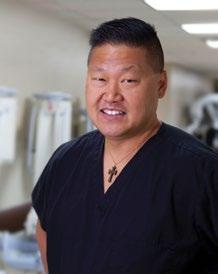
of Neurosurgery, University of Miami Hospital
Spinal Cord Injury Outcomes
My primary research has been in the investigation of SCI Outcomes. I work with Miami Project researchers Drs. Allan Levi and Barth Green in studying the clinical effects of Hypothermia. Currently, a multi-center randomized, prospective study on the effects of hypothermia in SCI is underway. In addition, I am studying the clinical application of SCI biomarkers to predict the effects of both injuries as well as therapeutic interventions with Drs. Dalton Dietrich and Ross Bullock.
Research Professor, The Miami Project to Cure Paralysis, the Departments of Neurological Surgery and Physical Medicine & Rehabilitation
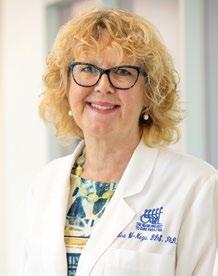
Interdisciplinary Research Approaches to Improve Neuropathic Pain Management after Neurotrauma
My research program is interdisciplinary and includes the identification of clinical correlates of underlying mechanisms of neuropathic pain associated with neurological trauma as a way to facilitate the translation of basic research findings to treatments tailored to specific mechanisms. A recent line of research in my program aims to better understand cortical mechanisms of multisensory integration and how to manipulate these mechanisms by visual illusion and transcranial electrical stimulation to reduce pain. In addition, we have examined SCI stakeholders (people with SCI and neuropathic pain, their significant others and SCI healthcare providers) perspectives on barriers and facilitators to optimal management of neuropathic pain. Based on this work we have developed a preliminary pain education tool that is now further refined based on structured stakeholder feedback. My research program is highly collaborative and includes extensive interdisciplinary protocols for a multimodal evaluation of self-reported pain symptoms and its psychosocial impact, quantitative assessment of neurological function, and biomarkers including non-invasive brain imaging and electrophysiology.
Blaya MO, Raval AP, Bramlett HM. Traumatic brain injury in women across lifespan. Neurobiol Dis. 2022;164:105613.
Boerger TF, Hyngstrom AS, Furlan JC, Kalsi-Ryan S, Curt A, Kwon BK, et al. Developing Peri-Operative Rehabilitation in Degenerative Cervical Myelopathy [AO Spine RECODE-DCM Research
Priority Number 6]: An Unexplored Opportunity? Global Spine J. 2022;12(1):97S-108S.
Cerqueira SR, Benavides S, Lee H, Ayad NG, Lee JK. BET protein inhibition promotes non-myeloid cell mediated neuroprotection after rodent spinal cord contusion. Experimental Neurology. 2022;352.
Chang KC, Rhodes CT, Zhang JQ, Moseley MC, Cardona SM, Huang SWA, et al. The chromatin repressors EZH2 and Suv4-20h coregulate cell fate specification during hippocampal development. Febs Lett. 2022;596(3):294-308.
Cyr B, Hadad R, Keane RW, Vaccari JPD. The Role of Non-canonical and Canonical Inflammasomes in Inflammaging. Front Mol Neurosci. 2022;15:774014.
Davies BM, Khan DZ, Barzangi K, Ali A, Mowforth OD, Nouri A, et al. We Choose to Call it ‘Degenerative Cervical Myelopathy’: Findings of AO Spine RECODEDCM, an International and MultiStakeholder Partnership to Agree a Standard Unifying Term and Definition for a Disease. Glob Spine J. 2022:21925682221111780.
Davies BM, Mowforth O, Gharooni AA, Tetreault L, Nouri A, Dhillon RS, et al. A New Framework for Investigating the Biological Basis of Degenerative Cervical Myelopathy [AO Spine RECODE-DCM Research Priority Number 5]: Mechanical Stress, Vulnerability and Time. Glob Spine J. 2022;12(1):78s-96s.
Davies BM, Mowforth O, Wood H, Karimi Z, Sadler I, Tetreault L, et al. Improving Awareness Could
Transform Outcomes in Degenerative Cervical Myelopathy [AO Spine RECODE-DCM Research
Priority Number 1]. Glob Spine J. 2022;12(1):28s-38s.
Davies BM, Phillips R, Clarke D, Furlan JC, Demetriades AK, Milligan J, et al. Establishing the SocioEconomic Impact of Degenerative Cervical Myelopathy (DCM) Is Fundamental to Improving Outcomes [AO Spine RECODE-DCM Research Priority Number 8]. Glob Spine J. 2022;12(1):122s-29s.
Davies BM, Touzet AY, Mowforth OD, Lee KS, Khan D, Furlan JC, et al. Development of a core measurement set for research in degenerative cervical myelopathy: a study protocol (AO Spine RECODE-DCM CMS). Bmj Open. 2022;12(6):e060436.
Dennison JL, Al-Ali H, Volmar CH, Brothers S, Watts J, Wahlestedt C, et al. Functional Drug Screening of Small Molecule Inhibitors of Epigenetic Modifiers in Refractory AML Patients. Cancers (Basel). 2022;14(17):4094.
Published studies that have passed the test of peer review are the benchmark of scientific progress. Listed here are research publications by Miami Project scientists and colleagues.
Egawa J, Arta RK, Lemmon VP, Munos-Barrero M, Shi Y, Igarashi M, et al. The cyclin G-associated kinase (GAK) inhibitor SGC-GAK-1 inhibits neurite outgrowth and synapse formation. Mol Brain. 2022; 15(1):68.
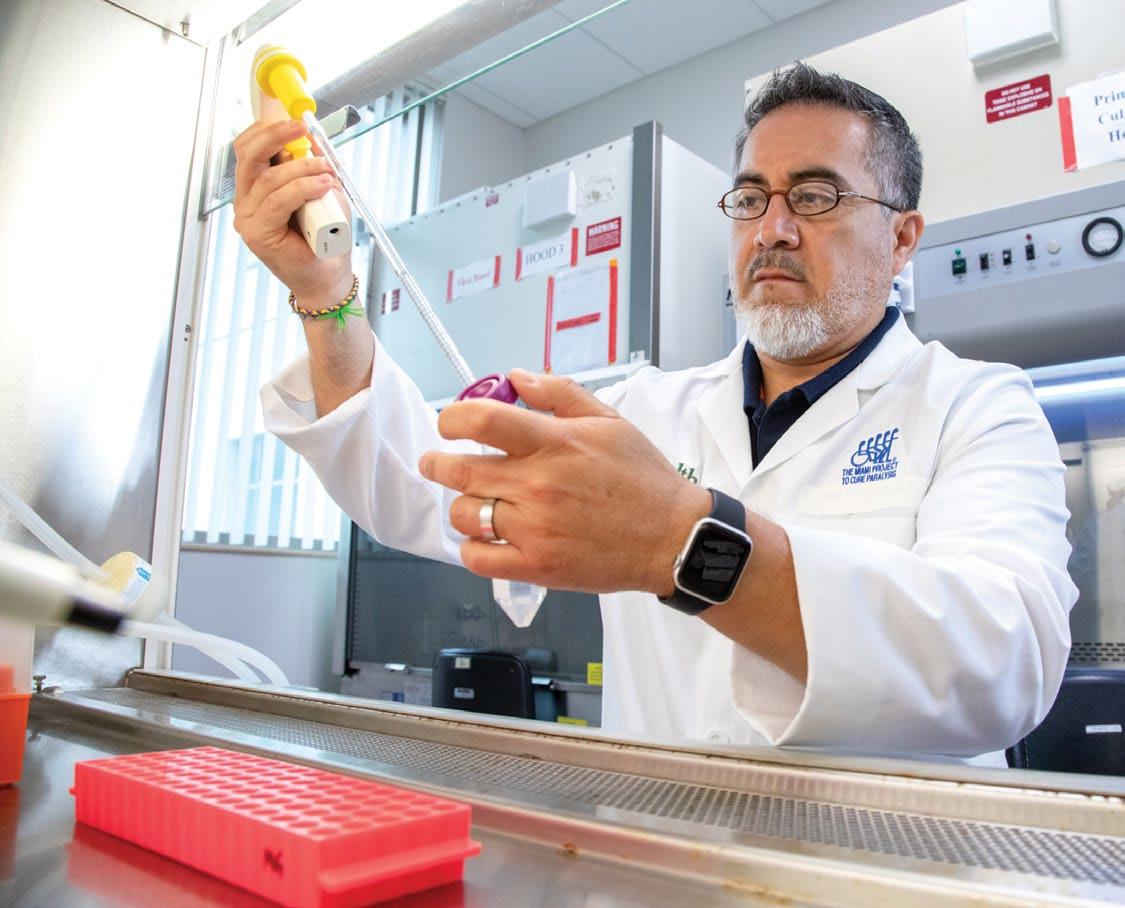
Elliot S, Catanuto P, Pereira-Simon S, Xia X, Shahzeidi S, Roberts E, et al. Urine-derived exosomes from individuals with IPF carry pro-fibrotic cargo. eLife. 2022;11:e79543.
Errante EL, Diaz A, Smartz T, Khan A, Silvera R, Brooks AE, et al. Optimal Technique for Introducing Schwann Cells Into Peripheral Nerve Repair Sites. Frontiers in Cellular Neuroscience. 2022;16:929494.
Farkas GJ, Burton AM, McMillan DW, Sneij A, Gater DR. The Diagnosis and Management of Cardiometabolic Risk and Cardiometabolic Syndrome after Spinal Cord Injury. J Pers Med. 2022;12(7):1088.
Farkas GJ, Mitchell JR, Sneij A, Thurston C, Rodriguez D, McMillan DW, et al. Cardiac structure and function relates to body composition and metabolic profiles in high spinal cord injury. Faseb J. 2022;36.
Galimberti S, Graziano F, Maas AIR, Isernia G, Lecky F, Jain S, et al. Effect of frailty on 6-month outcome after traumatic brain injury: a multicentre cohort study with external validation. Lancet Neurol. 2022;21(2):153-62.
Gharooni AA, Kwon BK, Fehlings MG, Boerger TF, Rodrigues-Pinto R, Koljonen PA, et al. Developing Novel Therapies for Degenerative Cervical Myelopathy [AO Spine RECODE-DCM Research Priority Number 7]: Opportunities From Restorative Neurobiology. Glob Spine J. 2022;12(1):109s-21s.
Govindarajan V, Shah AH, Di L, Rivas S, Suter RK, Eichberg DG, et al. Systematic Review of Epigenetic Therapies for Treatment of IDHmutant Glioma. World Neurosurg. 2022;162:47-56.
Grassner L, Garcia-Ovejero D, Mach O, Lopez-Dolado E, Vargas-Baquero E, Alcobendas-Maestro M, et al. A New Score Based on the International Standards for Neurological Classification of Spinal Cord Injury for Integrative Evaluation of Changes in Sensorimotor Functions. J Neurotraum. 2022;39(9-10):613-26.
Gudin J, Vu L, Ceschim MR, Gude L, Peskin E, Alvarez A, et al. Peripherally acting mu-opioid receptor antagonists for the treatment of opioid-induced constipation. Aliment Pharmacol Ther. 2022;55 Suppl 2:S8-S15.
Guest J, Datta N, Jimsheleishvili G, Gater DR. Pathophysiology, Classification and Comorbidities after Traumatic Spinal Cord Injury. J Pers Med. 2022;12(7):1126.
Hachem LD, Zhu M, Aarabi B, Davies B, DiGiorgio A, Evaniew N, et al. A Practical Classification System for Acute Cervical Spinal Cord Injury Based on a Three-Phased Modified Delphi Process From the AOSpine Spinal Cord Injury Knowledge Forum. Global Spine J. 2022:21925682221114800.
Hejrati N, Moghaddamjou A, Pedro K, Alvi MA, Harrop JS, Guest JD, et al. Current Practice of Acute Spinal Cord Injury Management: A Global Survey of Members from the AO Spine. Global Spine J. 2022:21925682221116888.
Hilton B, Gardner EL, Jiang Z, Tetreault L, Wilson JRF, Zipser CM, et al. Establishing Diagnostic Criteria for Degenerative Cervical Myelopathy [AO Spine RECODE-DCM Research Priority Number 3]. Global Spine J. 2022;12(1):55S-63S.
Jergova S, Hernandez M, Sagen J. Analgesic effect of recombinant GABAergic precursors releasing omega-conotoxin MVIIA in a model of peripheral nerve injury in rats. Mol Pain. 2022;18:17448069221129829.
Jin H, Liu Y, Liu X, Khodeiry MM, Lee JK, Lee RK. Hematogenous Macrophages Contribute to Fibrotic Scar Formation After Optic Nerve Crush. Mol Neurobiol. 2022;59(12):7393-403.
Johnson NH, Hadad R, Taylor RR, Rodriguez Pilar J, Salazar O, Llompart-Pou JA, et al. Inflammatory Biomarkers of Traumatic Brain Injury. Pharmaceuticals (Basel). 2022;15(6):660.
Johnson NH, Keane RW, Vaccari JPD. Renal and Inflammatory Proteins as Biomarkers of Diabetic Kidney Disease and Lupus Nephritis. Oxid Med Cell Longev. 2022;2022. PMID: 35355862.
Kals M, Kunzmann K, Parodi L, Radmanesh F, Wilson L, Izzy S, et al. A genome-wide association study of outcome from traumatic brain injury. EBioMedicine. 2022;77:103933.
Kaushal M, Kurpad SN. Improvements to the manufacturing process for generation of Schwann cells: from laboratory to clinical translation. J Neurosurg-Spine. 2022;36(1):133-34.
Kelly-Hedrick M, Abd-El-Barr M, Aarabi B, Curt A, Howley SP, Harrop JS, et al. The Importance of Prospective Registries and Clinical Research Networks in the Evolution of Spinal Cord Injury Care. J Neurotrauma. 2022. PMID: 36576020.
Kerr N, Sanchez J, Moreno WJ, Furones-Alonso OE, Dietrich WD, Bramlett HM, et al. Post-stroke low-frequency whole-body vibration improves cognition in middle-aged rats of both sexes. Front Aging Neurosci. 2022;14:942717.
Kerr NA, Sanchez J, O’Connor G, Watson BD, Daunert S, Bramlett HM, et al. Inflammasome-Regulated Pyroptotic Cell Death in Disruption of the Gut-Brain Axis After Stroke. Transl Stroke Res. 2022;13(6):898912.
Khalafi S, Zhu SM, Khurana R, Lohse I, Giordano S, Corso S, et al. A novel strategy for combination of clofarabine and pictilisib is synergistic in gastric cancer. Transl Oncol. 2022;15(1):101260.
Loh E, Mirkowski M, Agudelo AR, Allison DJ, Benton B, Bryce TN, et al. The CanPain SCI clinical practice guidelines for rehabilitation management of neuropathic pain after spinal cord injury: 2021 update. Spinal Cord. 2022;60(6):548-66.
Lund MC, Ellman DG, Nissen M, Nielsen PS, Nielsen PV, Jorgensen C, et al. The Inflammatory Response after
Moderate Contusion Spinal Cord Injury: A Time Study. Biology-Basel. 2022;11(6):939.
Mah KM, Wu W, Al-Ali H, Sun Y, Han Q, Ding Y, et al. Compounds co-targeting kinases in axon regulatory pathways promote regeneration and behavioral recovery after spinal cord injury in mice. Exp Neurol. 2022;355:114117.
Mallela SK, Ge M, Molina J, Santos JV, Kim JJ, Mitrofanova A, et al. Sphingomyelin phosphodiesterase acid like 3B (SMPDL3b) regulates Perilipin5 (PLIN5) expression and mediates lipid droplet formation. Genes Dis. 2022;9(6):1397-400.
Mowforth OD, Khan DZ, Wong MY, Pickering GAE, Dean L, Magee J, et al. Gathering Global Perspectives to Establish the Research Priorities and Minimum Data Sets for Degenerative Cervical Myelopathy: Sampling Strategy of the First Round Consensus Surveys of AO Spine RECODE-DCM. Glob Spine J. 2022;12(1):8s-18s.
Nash MS, Farkas GJ, Tiozzo E, Gater DR. Exercise to mitigate cardiometabolic disorders after spinal cord injury. Curr Opin Pharmacol. 2022;62:4-11.
Noga BR, Whelan PJ. The Mesencephalic Locomotor Region: Beyond Locomotor Control. Front Neural Circuit. 2022;16:884785.
Nouri A, Tessitore E, Molliqaj G, Meling T, Schaller K, Nakashima H, et al. Degenerative Cervical Myelopathy: Development and Natural History [AO Spine RECODE-DCM Research Priority Number 2]. Glob Spine J. 2022;12(1):39s-54s.
O’Neill N, Mah KM, BadilloMartinez A, Jann V, Bixby JL, Lemmon VP. Markerless tracking enables distinction between strategic compensation and functional recovery after spinal cord injury. Exp Neurol. 2022;354:114085.
Palacios EM, Yuh EL, Mac Donald CL, Bourla I, Wren-Jarvis J, Sun XY, et al. Diffusion Tensor Imaging Reveals Elevated Diffusivity of White Matter Microstructure that Is Independently Associated with LongTerm Outcome after Mild Traumatic Brain Injury: A TRACK-TBI Study. J Neurotraum. 2022;39(19-20):1318-28.
Palermo AE, Nash MS, Kirk-Sanchez NJ, Cahalin LP. Adherence to and impact of home-based high-intensity IMT in people with spinal cord injury: a pilot study. Spinal Cord Ser Cases. 2022;8(1):85.
Pearse DD, Ghosh M. Neuronal and endothelial transglutaminase-2 expression in experimental autoimmune encephalomyelitis and multiple sclerosis. Neural Regen Res. 2022;17(7):1471-72.
Pearse DD, Hefley AB, Morales AA, Ghosh M. Comparative Profiling of TG2 and Its Effectors in Human Relapsing Remitting and Progressive Multiple Sclerosis. Biomedicines. 2022;10(6).
Pinto M, Diaz F, Nissanka N, Guastucci CS, Illiano P, Brambilla R, et al. Adult-Onset Deficiency of Mitochondrial Complex III in a Mouse Model of Alzheimer’s Disease Decreases Amyloid Beta Plaque Formation. Molecular Neurobiology. 2022;59(10):6552-66.
Plastini MJ, Desu HL, Ascona MC, Lang AL, Saporta MA, Brambilla R. Transcriptional abnormalities in induced pluripotent stem cell-derived oligodendrocytes of individuals with primary progressive multiple sclerosis. Front Cell Neurosci. 2022;16:972144.
Pressly JD, Gurumani MZ, Santos JTV, Fornoni A, Merscher S, AlAli H. Adaptive and maladaptive roles of lipid droplets in health and disease. Am J Physiol-Cell Ph. 2022;322(3):C468-C81.
Raval AP, Bramlett HM. COVID-19 Deterred Career Path of Our Undergraduate Neuroscience Students: Educators’ Perspective. eNeuro. 2022;9(5):ENEURO.0384-22.2022.
Ribeiro M, Ayupe AC, Beckedorff FC, Levay K, Rodriguez S, Tsoulfas P, et al. Retinal ganglion cell expression of cytokine enhances occupancy of NG2 cell-derived astrocytes at the nerve injury site: Implication for axon regeneration. Experimental Neurology. 2022;355:114147.
Robayo LE, Govind V, Vastano R, Felix ER, Fleming L, Cherup NP, et al. Multidimensional pain phenotypes after Traumatic Brain Injury. Front Pain Res. 2022;3:947562.
Rodrigues-Pinto R, Montenegro TS, Davies BM, Kato S, Kawaguchi Y, Ito M, et al. Optimizing the Application of Surgery for Degenerative Cervical Myelopathy [AO Spine RECODEDCM Research Priority Number 10]. Glob Spine J. 2022;12(1):147s-58s.
Ryan CB, Choi JS, Al-Ali H, Lee JK. Myelin and non-myelin debris contribute to foamy macrophage formation after spinal cord injury. Neurobiol Dis. 2022;163:105608.
Rybin MJJ, Laverde-Paz MJK, Suter RK, Affer MG, Ayad NG, Feng YB, et al. A dual aurora and lim kinase inhibitor reduces glioblastoma proliferation and invasion. Bioorg Med Chem Lett. 2022;61:128614.
Scott XO, Chen SH, Hadad R, Yavagal D, Peterson EC, Starke RM, et al. Cohort study on the differential expression of inflammatory and angiogenic factors in thrombi, cerebral and peripheral plasma following acute large vessel occlusion stroke. J Cerebr Blood F Met. 2022;42(10):1827-39.
Shah AH, Suter R, Gudoor P, DoucetO’Hare TT, Stathias V, Cajigas I, et al. A multiparametric pharmacogenomic strategy for drug repositioning predicts therapeutic efficacy for glioblastoma cell lines. Neuro-Oncol Adv. 2022;4(1):vdab192.
Tapanes SA, Arizanovska D, Diaz MM, Folorunso OO, Harvey T, Brown SE, et al. Inhibition of glial D-serine release rescues synaptic damage after brain injury. Glia. 2022;70(6):1133-52.
Tapia ML, Nascimento-dos-Santos G, Park KK. Subtype-specific survival and regeneration of retinal ganglion cells
in response to injury. Front Cell Dev Biol. 2022;10:956279.
Tapia ML, Park KK. Awakening dormant neurons long after spinal cord injury. PLoS Biol. 2022;20(9):e3001830.
Tator C, Guest J, Neal CJ, Howley SP, Toups EG, Harrop JS, et al. History and Accomplishments of the North American Clinical Trials Network (NACTN) for Spinal Cord Injury, 2004 to 2022. J Neurotrauma. 2022. PMID: 36515162.

Vastano R, Costantini M, Alexander WH, Widerstrom-Noga E. Multisensory integration in humans with spinal cord injury. Sci Rep. 2022;12(1):22156.
Vastano R, Costantini M, Widerstrom-Noga E. Maladaptive reorganization following SCI: The role of body representation and multisensory integration. Prog Neurobiol. 2022;208.
Vedantam A, Ugiliweneza B, Williamson T, Guest J, Harrop JS, Tator C, et al. The Evolving Profile of Acute Spinal Cord Injury Demographics, Outcomes and Surgical Treatment in North America: Analysis of a Prospective Multicenter Dataset of 989 Patients. J Neurotrauma. 2022. PMID: 36448585.
Vontell RT, de Rivero Vaccari JP, Sun X, Gultekin SH, Bramlett HM, Dietrich WD, et al. Identification of inflammasome signaling proteins in neurons and microglia in early and intermediate stages of Alzheimer’s disease. Brain Pathol. 2023;33(4):e13142.
Wang H, Peng Z, Li Y, Sahn JJ, Hodges TR, Chou TH, et al. sigma(2)R/TMEM97 in retinal ganglion cell degeneration. Sci Rep. 2022;12(1):20753.
Wang ZM, Romanski A, Mehra V, Wang YF, Brannigan M, Campbell BC, et al. Brain-wide analysis of the supraspinal connectome reveals anatomical correlates to functional recovery after spinal injury. Elife. 2022; 11:e76254.
Wong ML, Widerstrom-Noga E, Field-Fote EC. Effects of whole-body
Tetreault L, Garwood P, Gharooni AA, Touzet AY, Nanna-Lohkamp L, Martin A, et al. Improving Assessment of Disease Severity and Strategies for Monitoring Progression in Degenerative Cervical Myelopathy [AO Spine RECODE DCM Research Priority Number 4]. Glob Spine J. 2022;12(1):64s-77s.
Tetreault L, Kalsi-Ryan S, Davies B, Nanna-Lohkamp L, Garwood P, Martin AR, et al. Degenerative Cervical Myelopathy: A Practical Approach to Diagnosis. Glob Spine J. 2022;12(8):1881-93.
Tetreault L, Mowforth O, Khan DZ, Gronlund T, Garwood P, Hazenbiller O, et al. James Lind Alliance Priority Setting Partnership for Degenerative Cervical Myelopathy [AO Spine RECODE-DCM]: An Overview of the Methodology Used to Process and Short-List Research Uncertainties. Global Spine J. 2022;12(1):19S-27S.
Touzet AY, Bhatti A, Dohle E, Bhatti F, Lee KS, Furlan JC, et al. Clinical outcome measures and their evidence base in degenerative cervical myelopathy: a systematic review to inform a core measurement set (AO Spine RECODE-DCM). Bmj Open. 2022;12(1):e057650.
Tovar A, Gomez A, Serrano A, Blanco MP, Galor A, Swaminathan SS, et al. Role of Caspase-1 as a Biomarker of Ocular Surface Damage. Am J Ophthalmol. 2022;239:74-83.
Vallejo FA, Sanchez A, Cuglievan B, Walters WM, De Angulo G, Vanni S, et al. NAMPT Inhibition Induces Neuroblastoma Cell Death and Blocks Tumor Growth. Front Oncol. 2022;12:883318.
vibration on neuropathic pain and the relationship between pain and spasticity in persons with spinal cord injury. Spinal Cord. 2022;60(11):96370.
Yang F, Rodriguez-Blanco J, Long J, Swiderska-Syn M, Wynn DT, Li B, et al. A Druggable UHRF1/ DNMT1/GLI Complex Regulates Sonic Hedgehog-Dependent Tumor Growth. Mol Cancer Res. 2022;20(11):1598-610.
Zhou LM, Kong GP, Palmisano I, Cencioni MT, Danzi M, De Virgiliis F, et al. Reversible CD8 T cell-neuron cross-talk causes aging- dependent neuronal regenerative decline. Science. 2022;376(6594):715.
Zipser CM, Cragg JJ, Guest JD, Fehlings MG, Jutzeler CR, Anderson AJ, et al. Cell-based and stem-cellbased treatments for spinal cord injury: evidence from clinical trials. Lancet Neurol. 2022;21(7):659-70.

The Miami Project to Cure Paralysis was established in 1985 to develop new therapies to improve function in paralyzed individuals. We are very enthusiastic about our current accomplishments and multi-disciplinary research programs. In addition, we are most eager about the future as we continue to move new treatments forward to treat paralysis.
